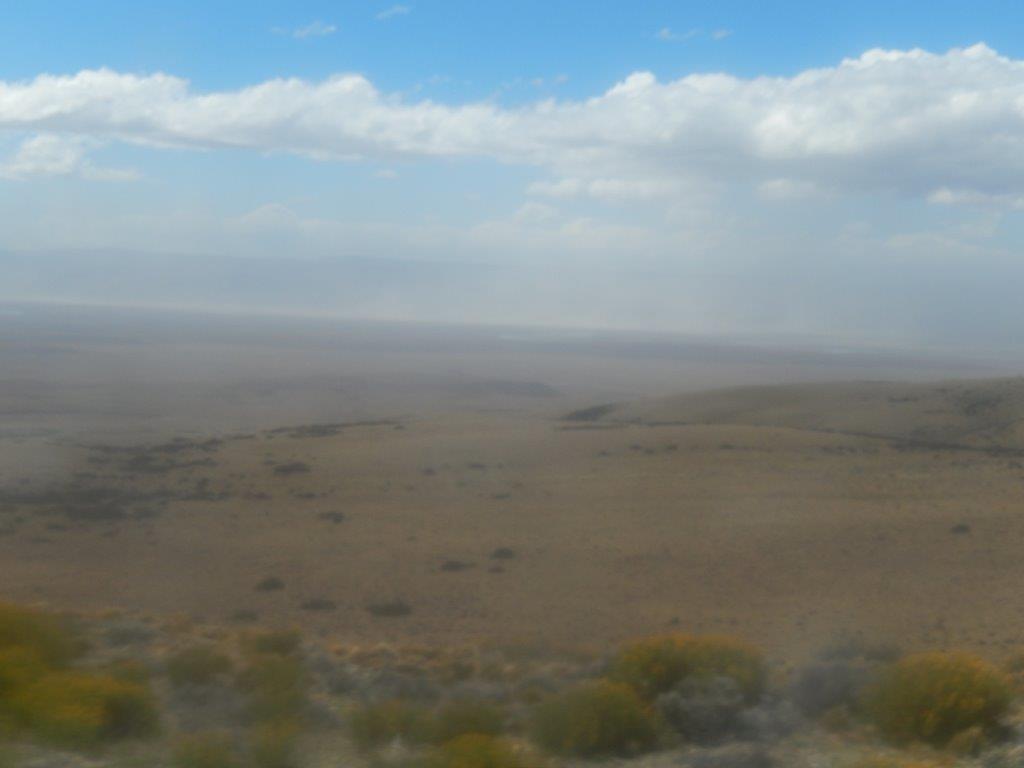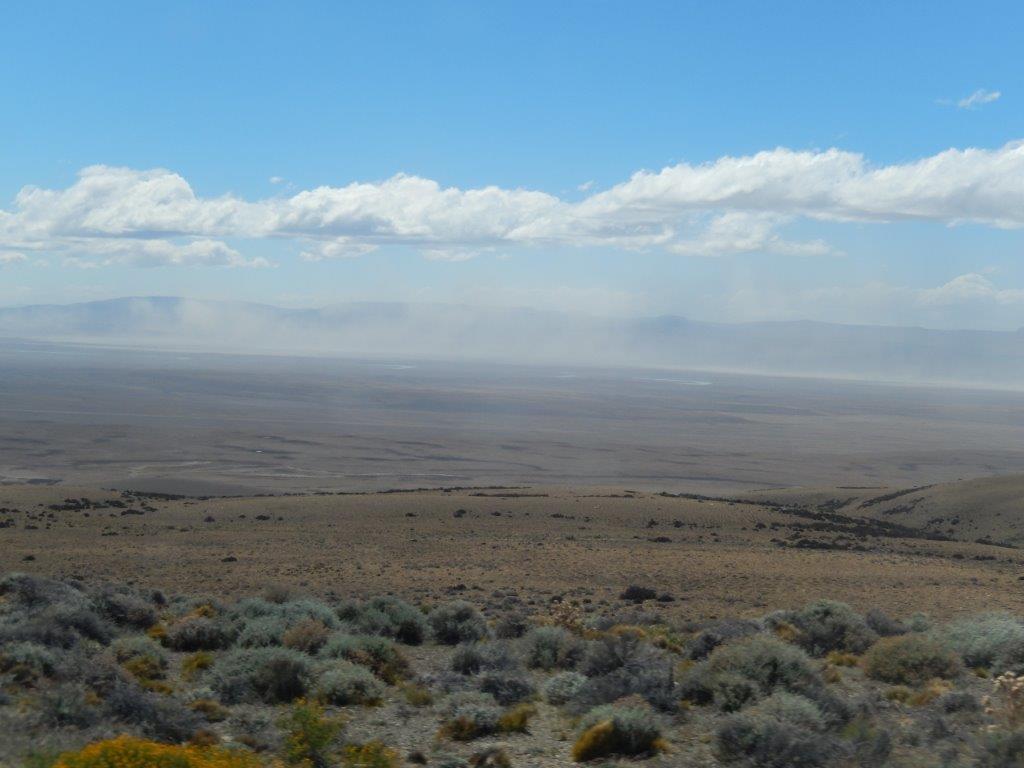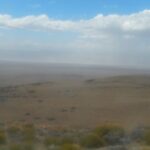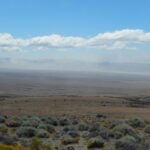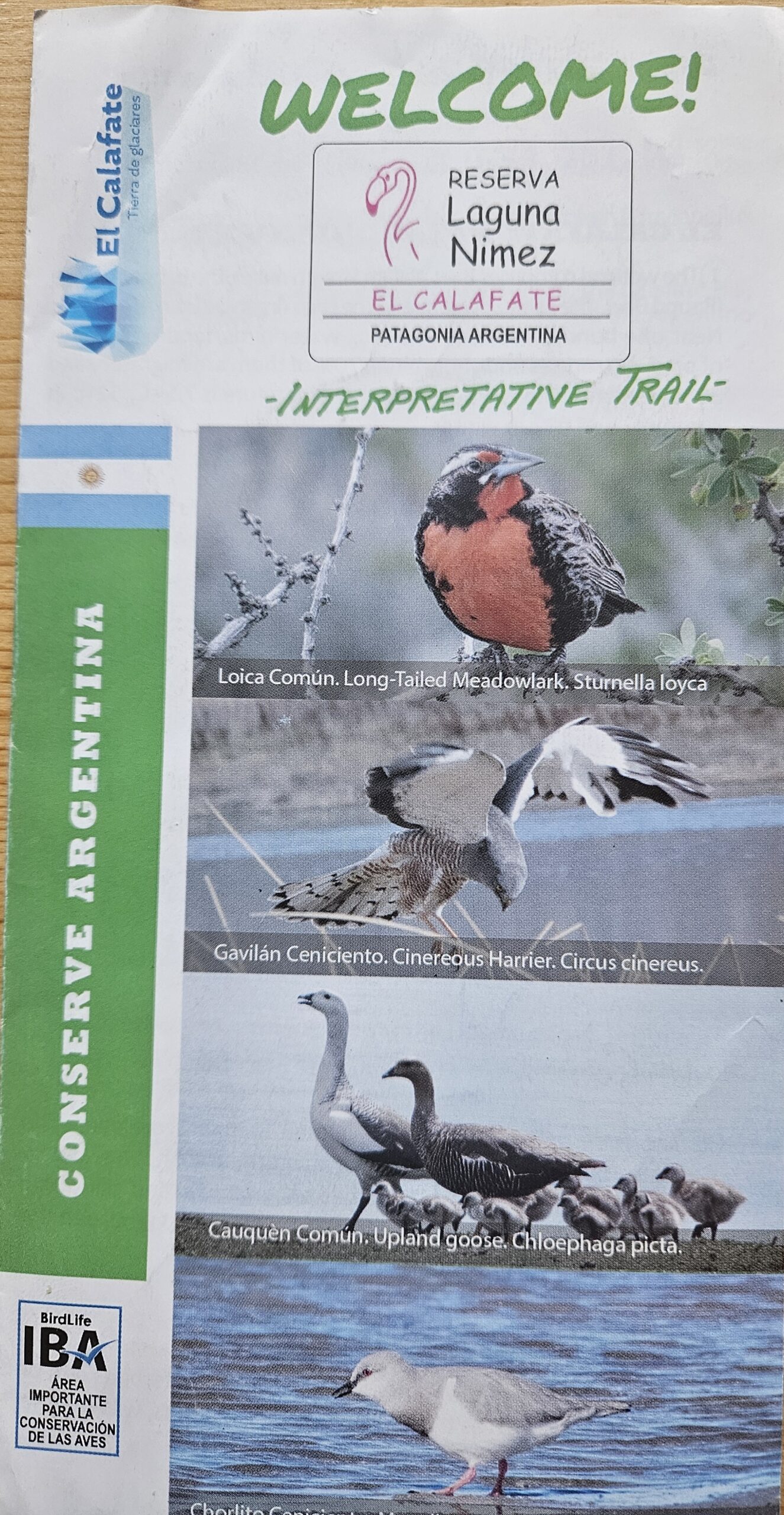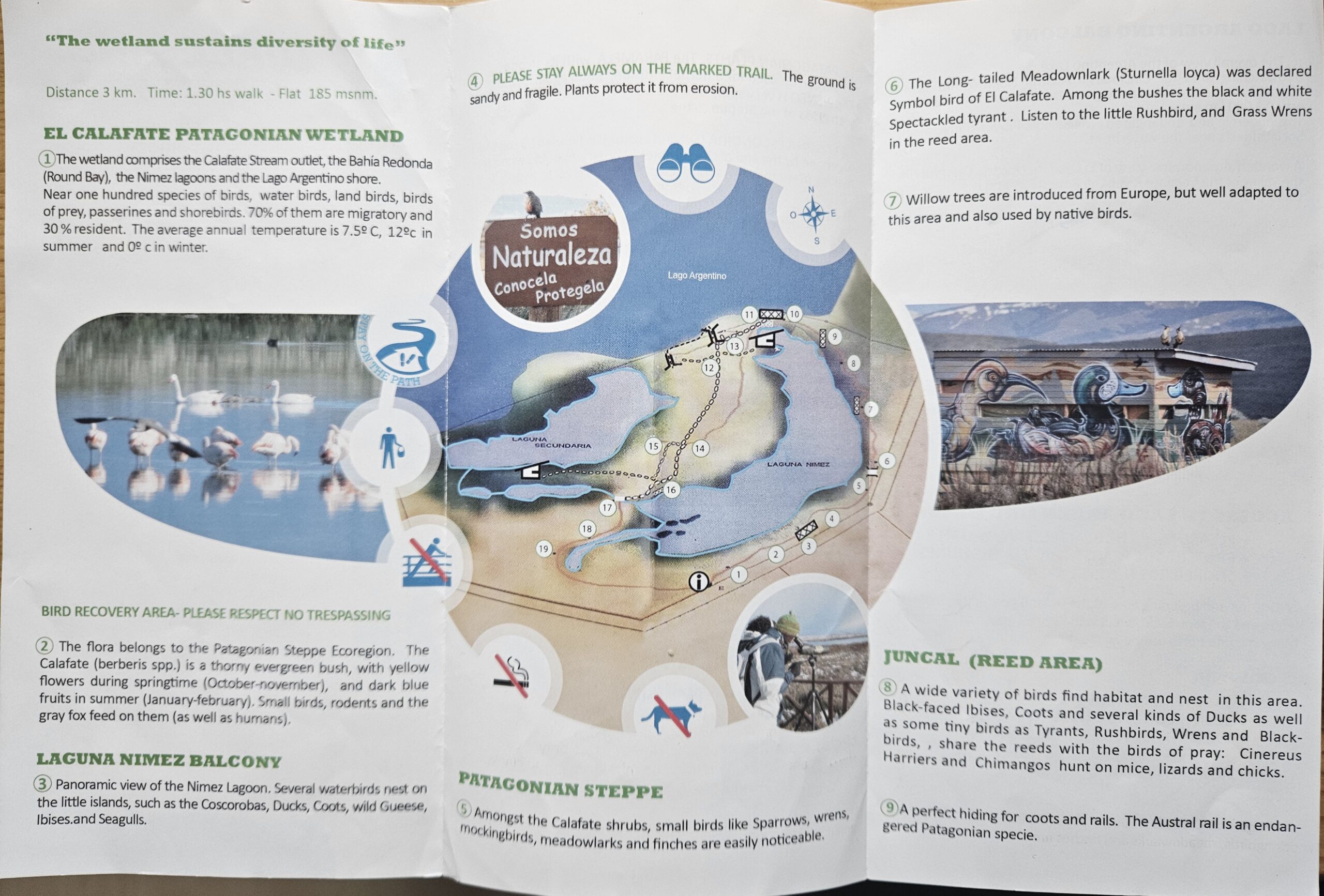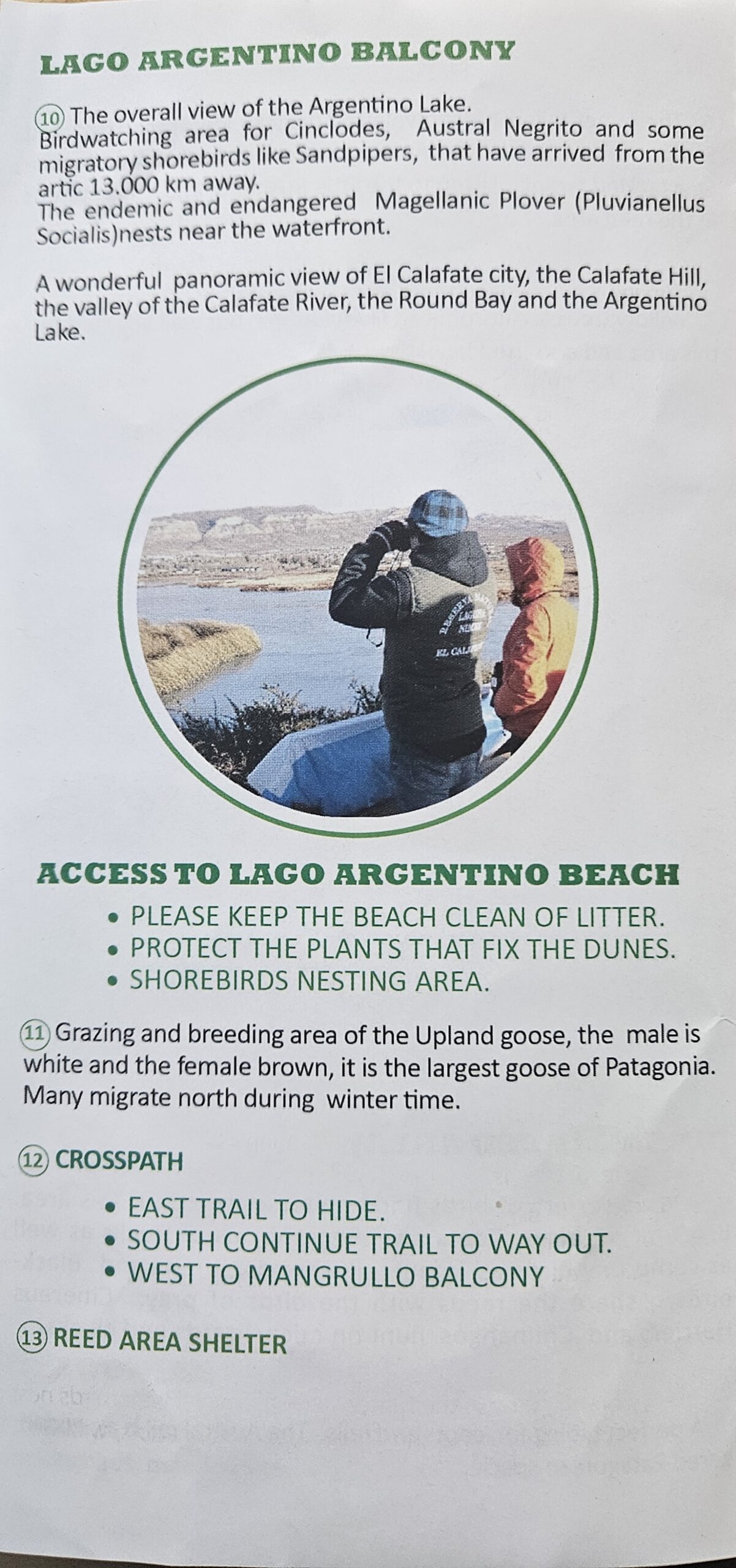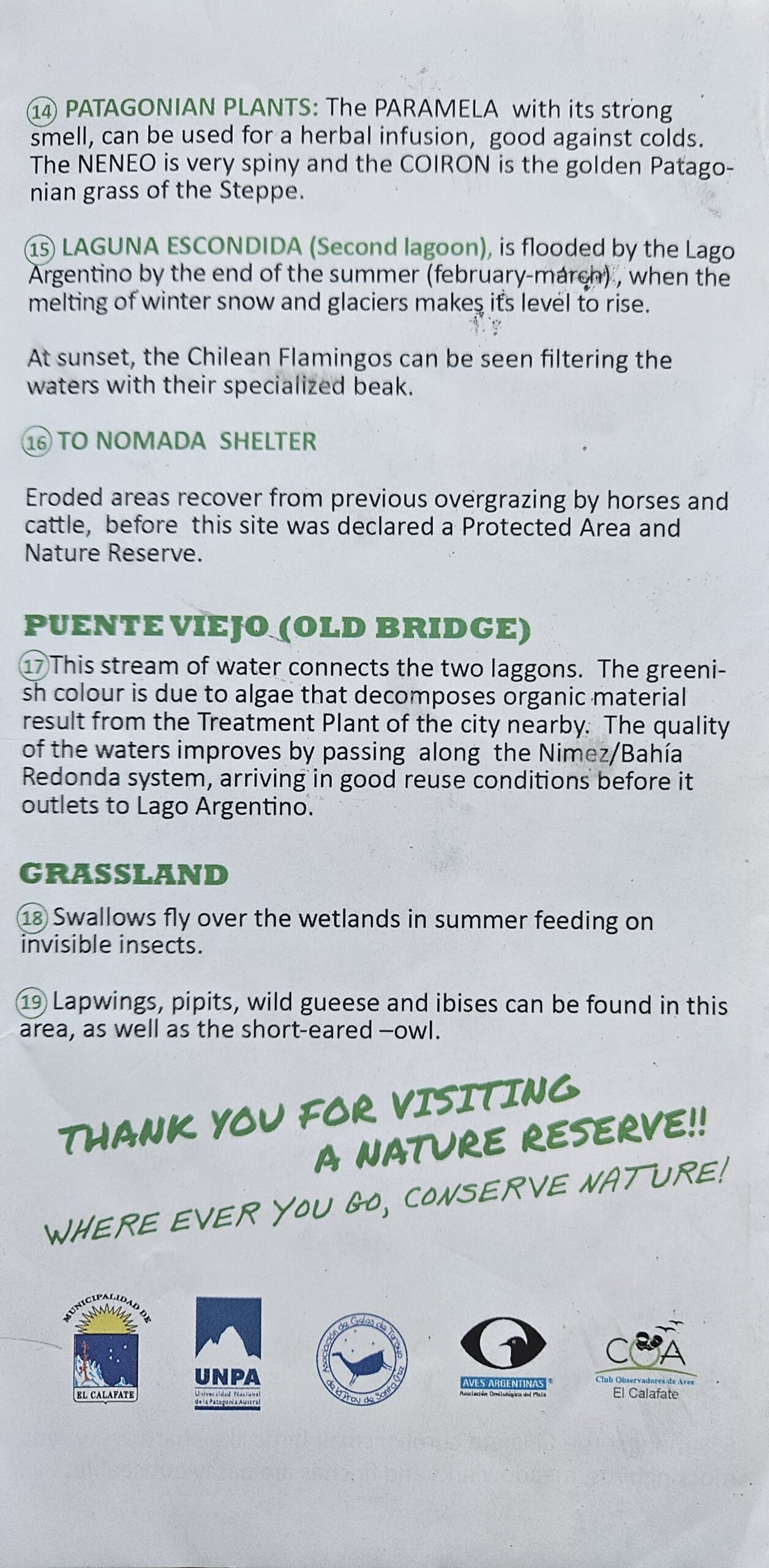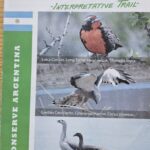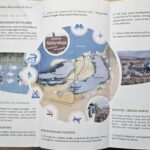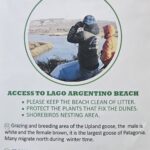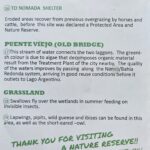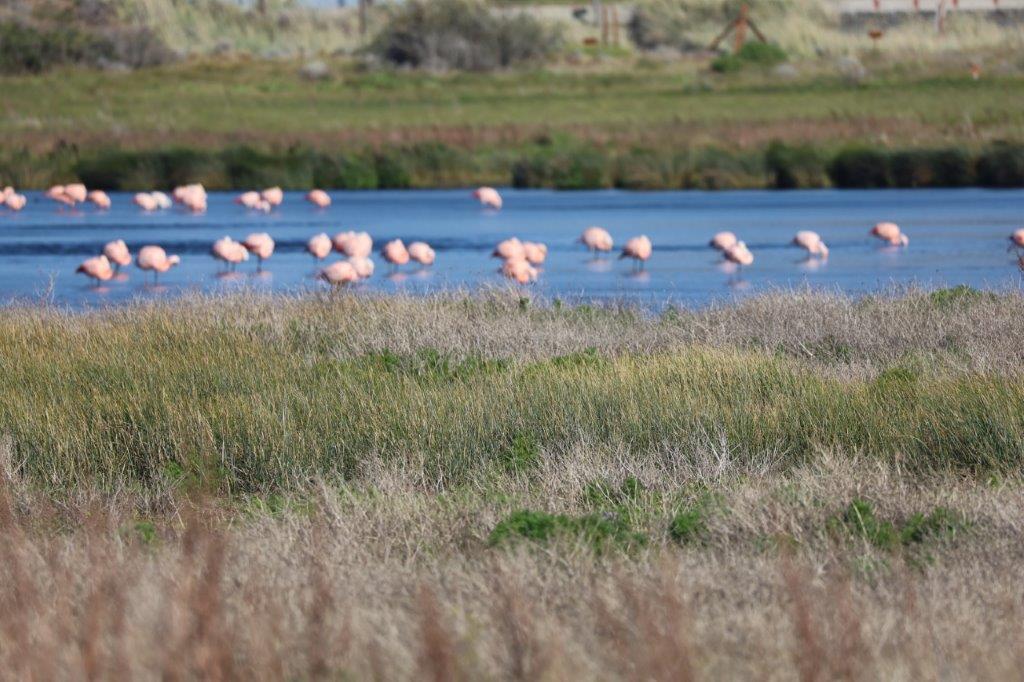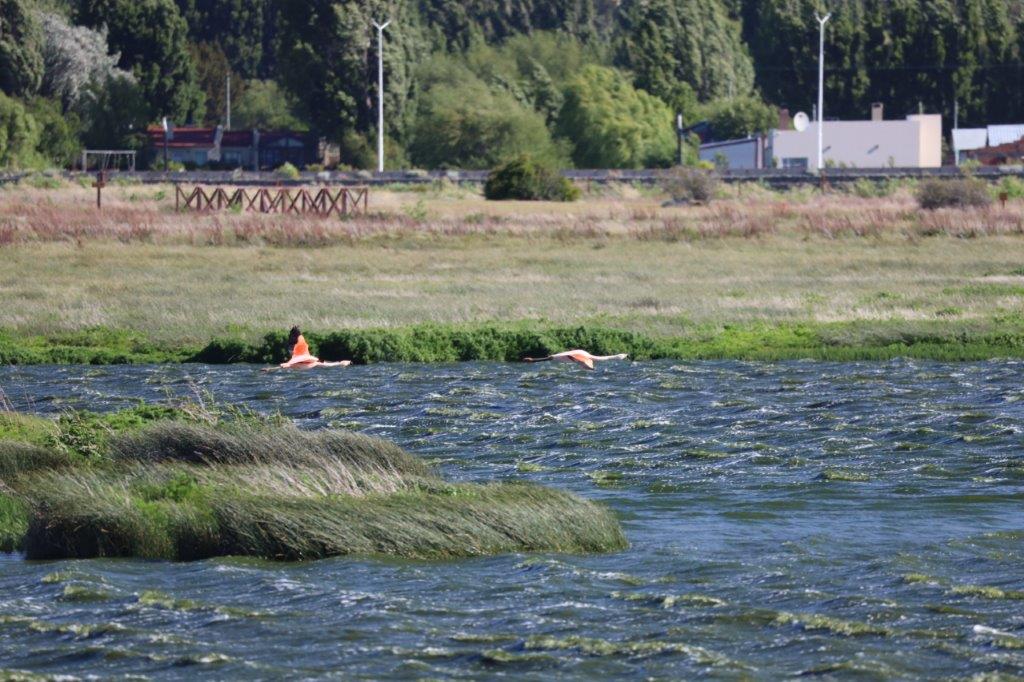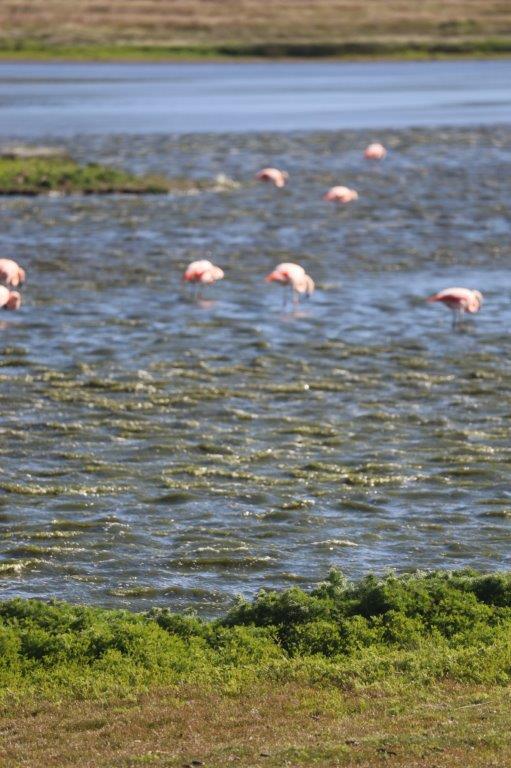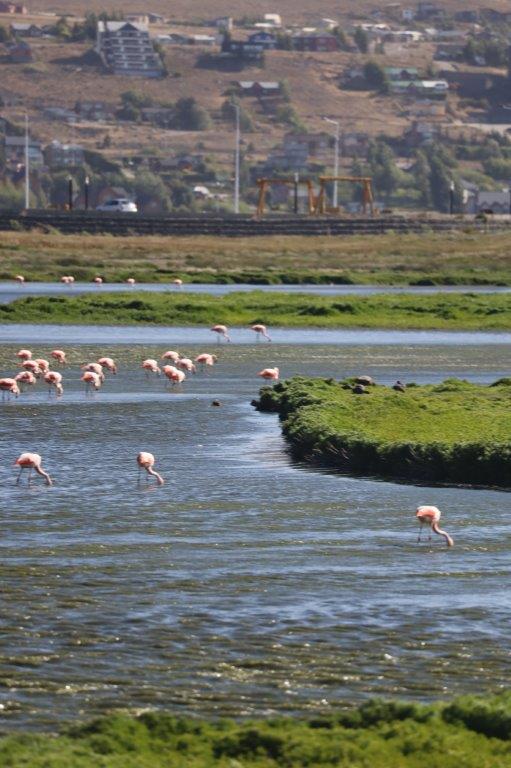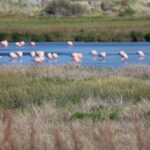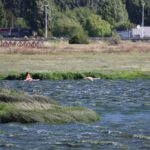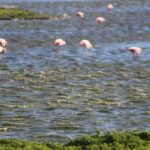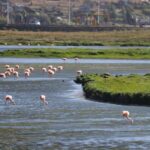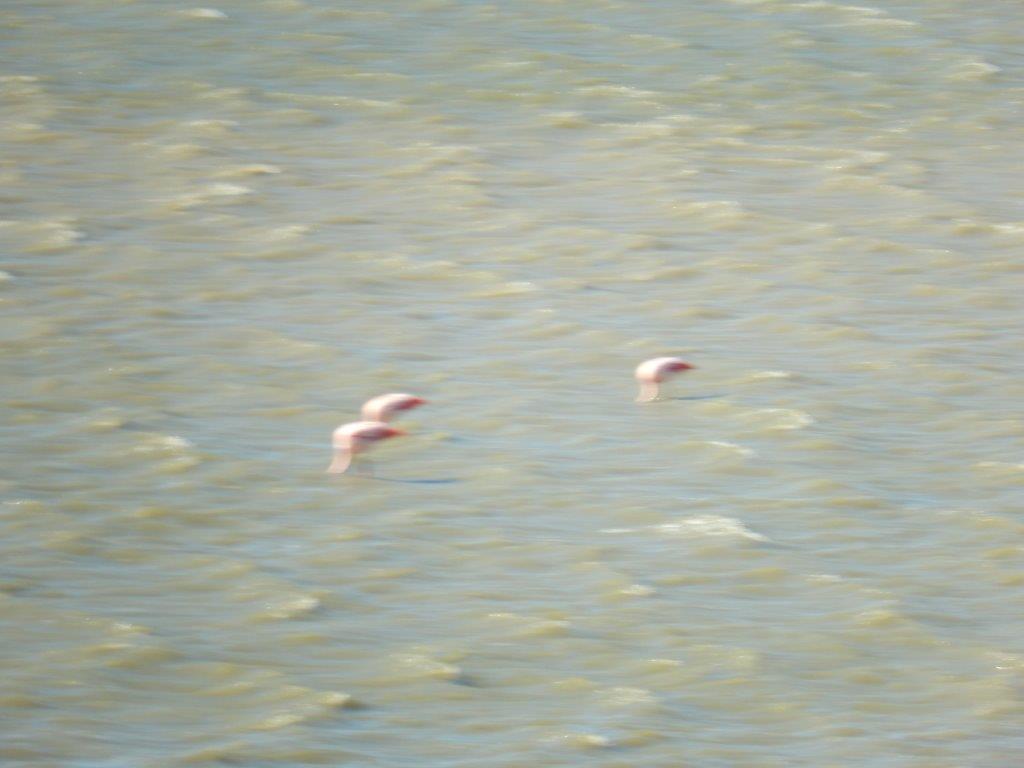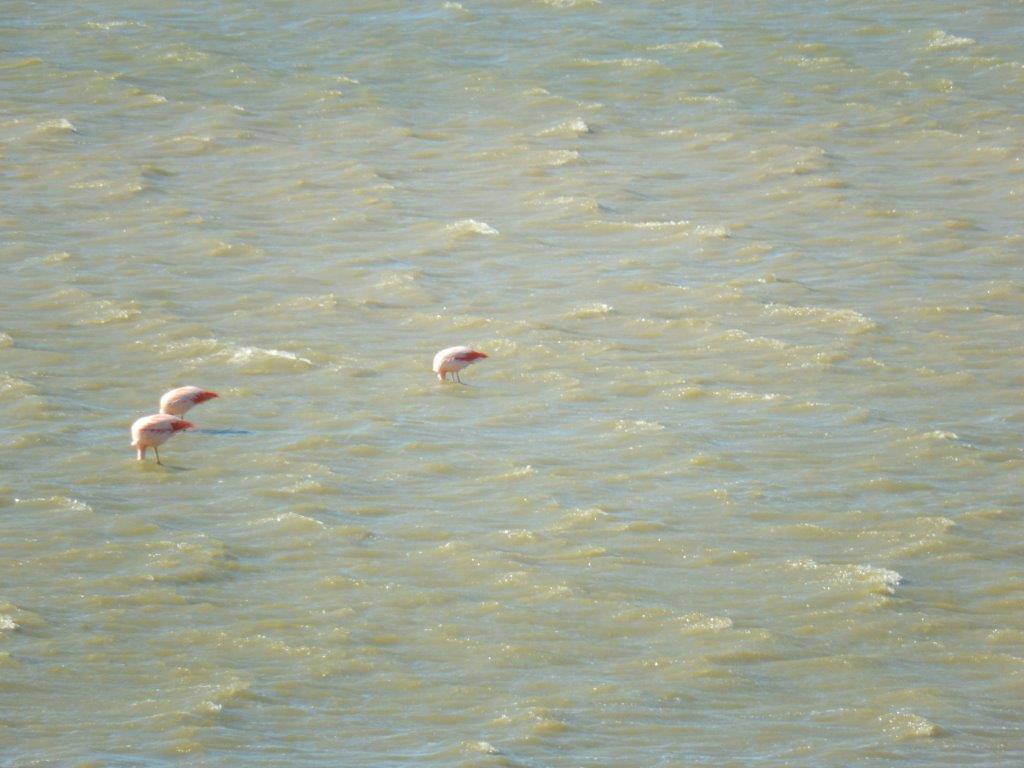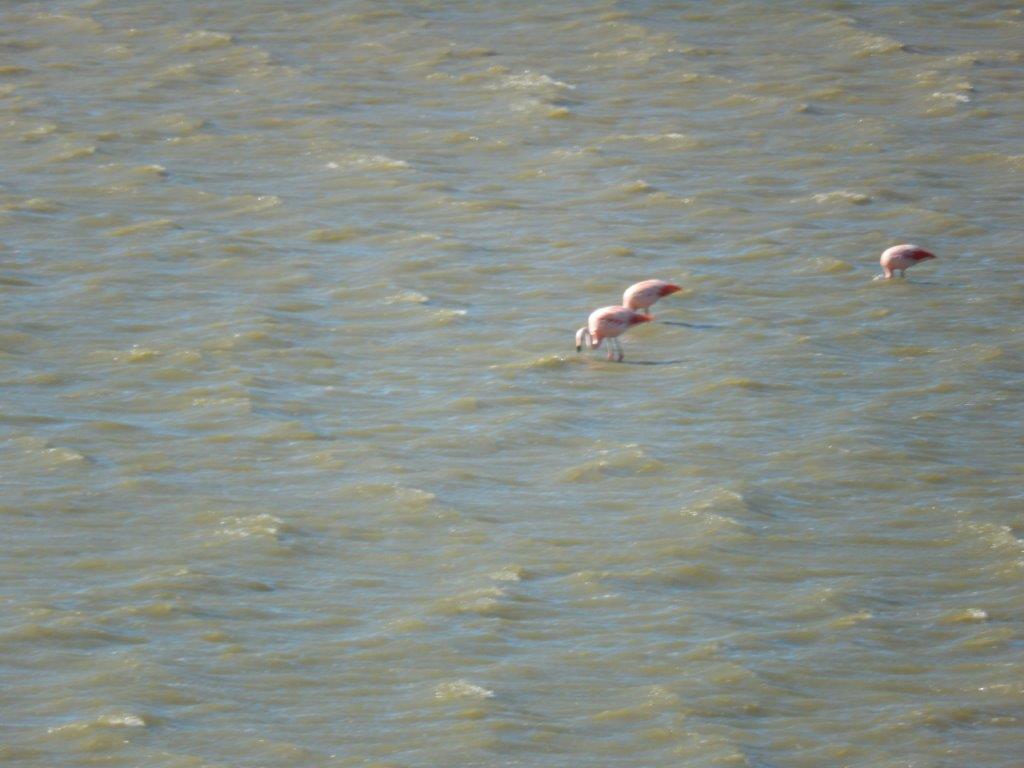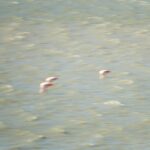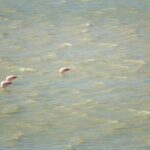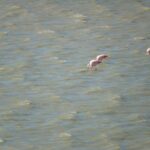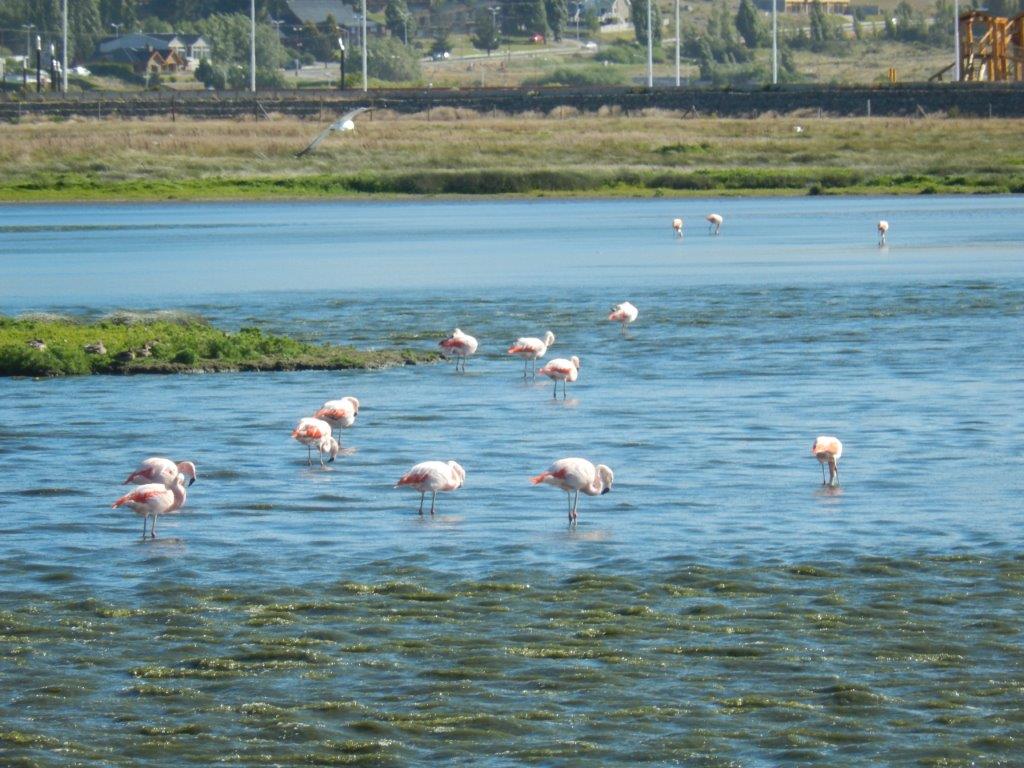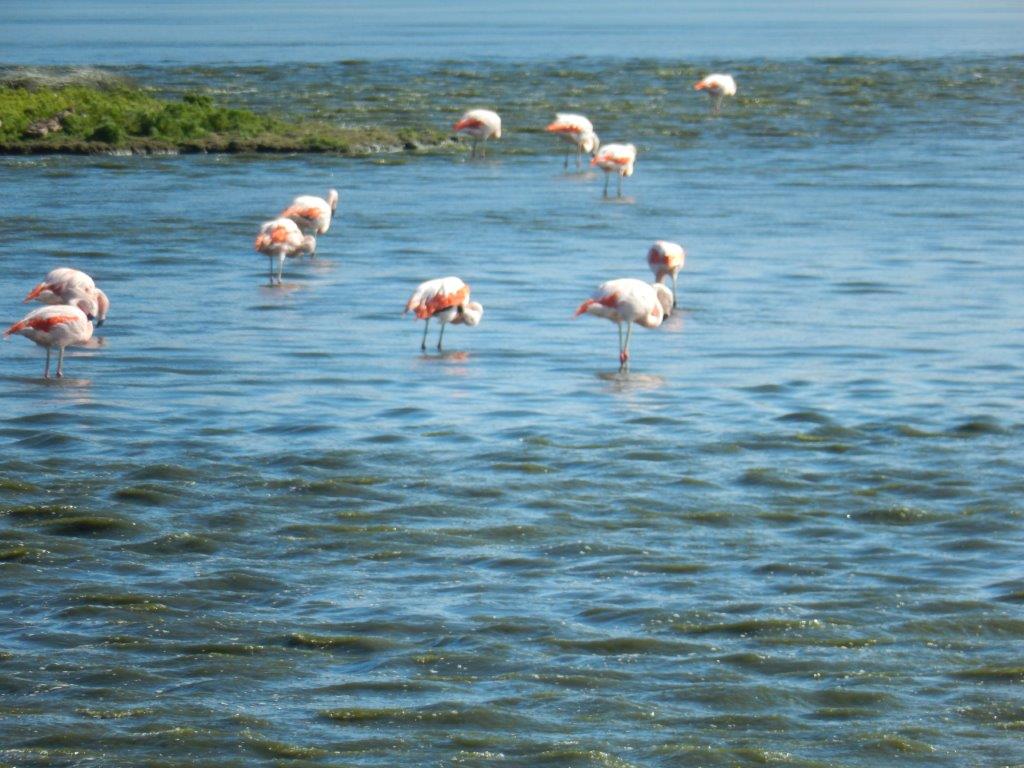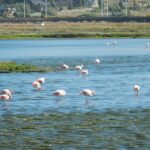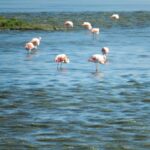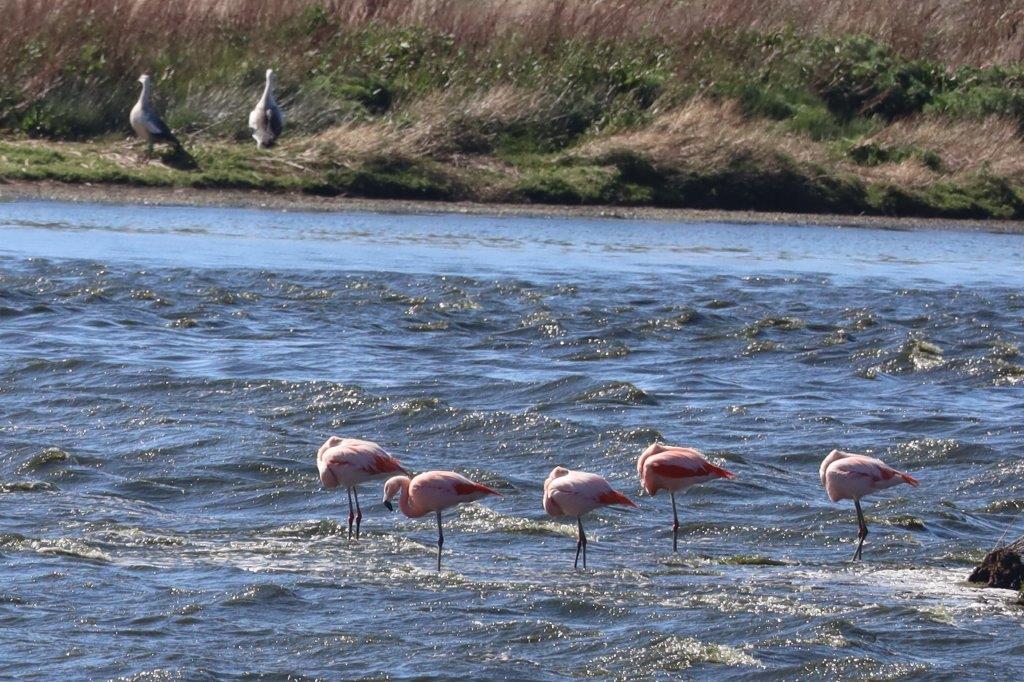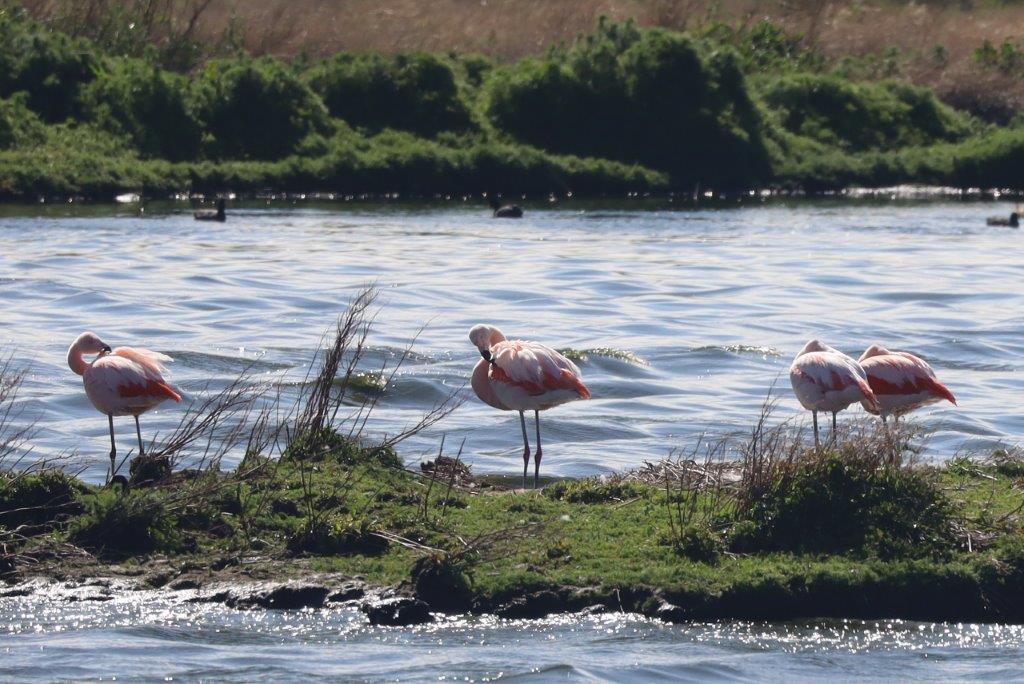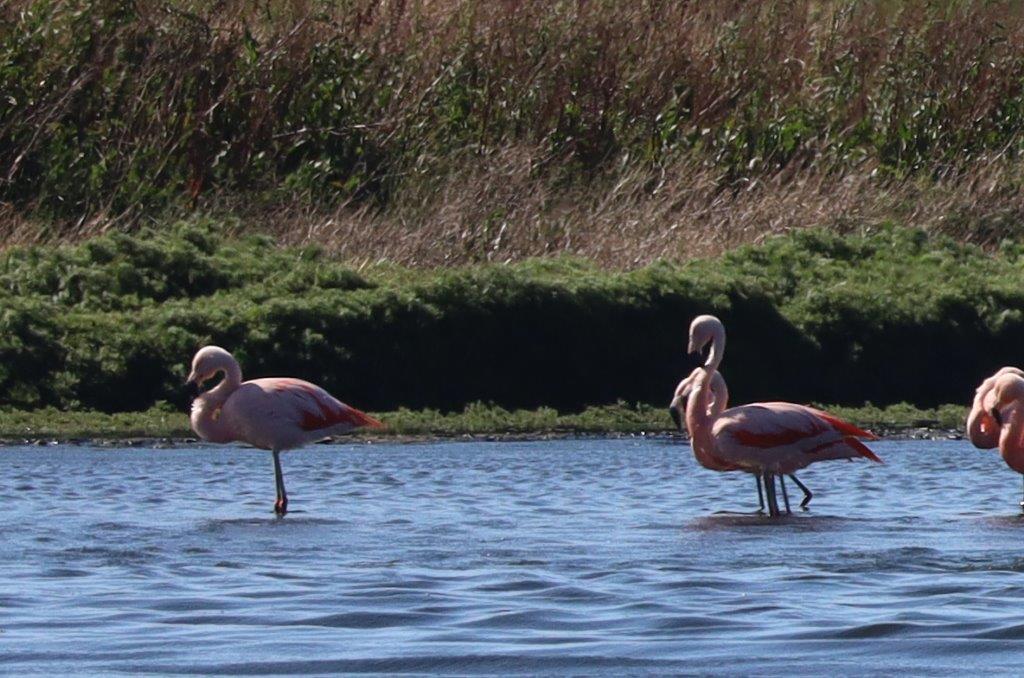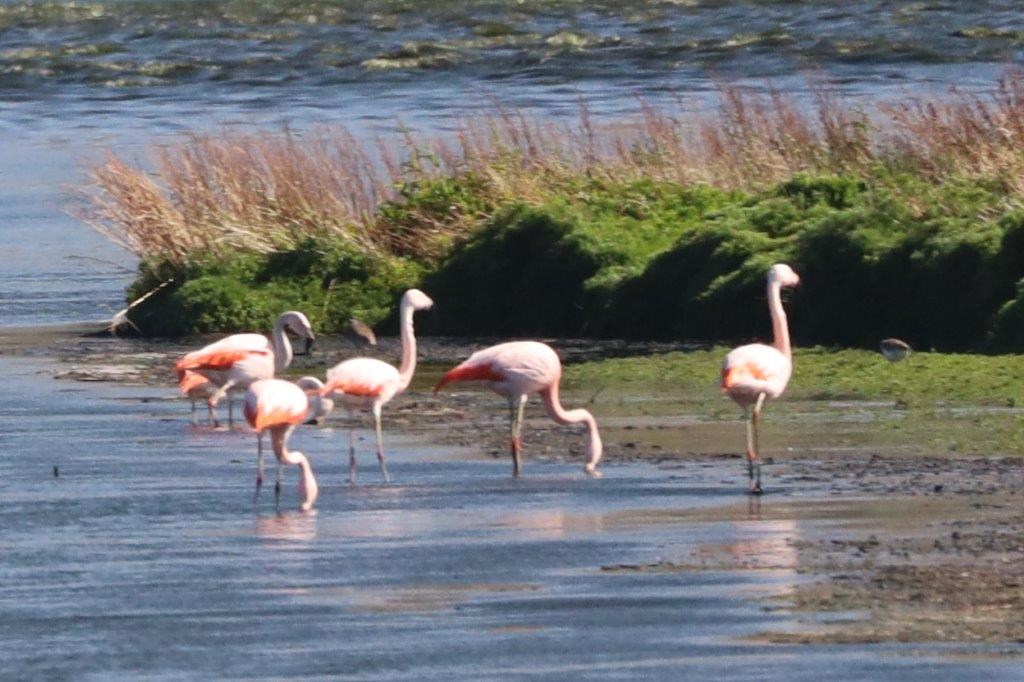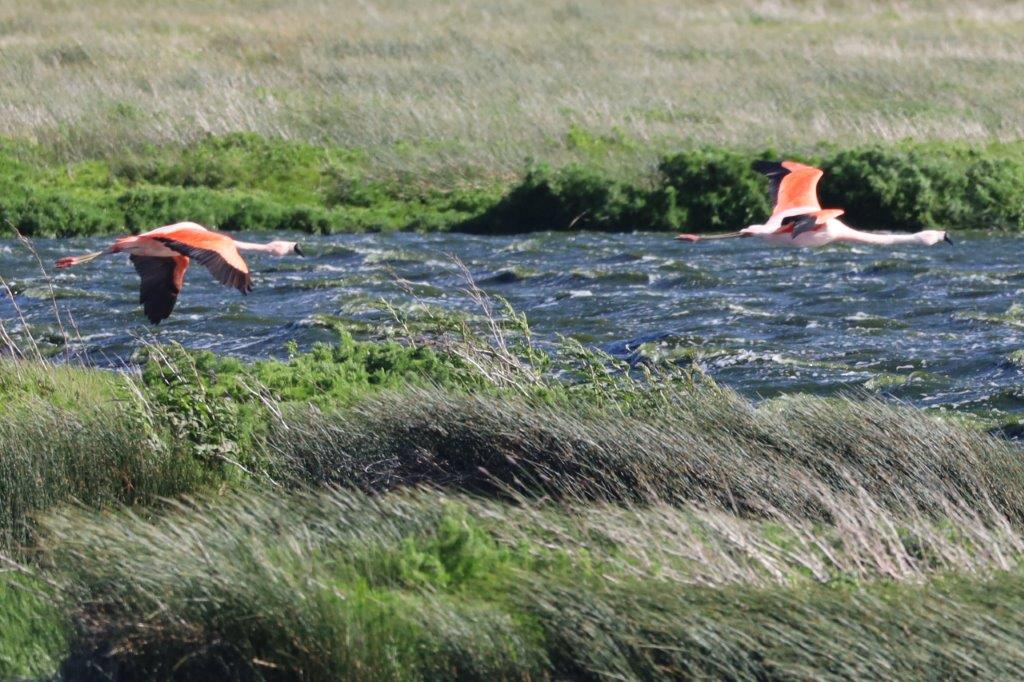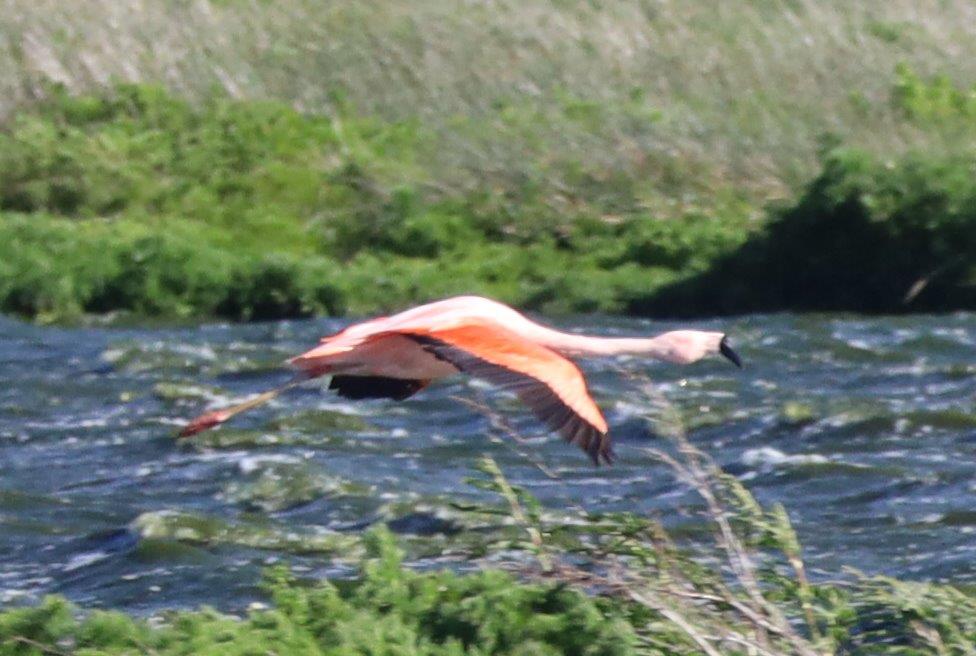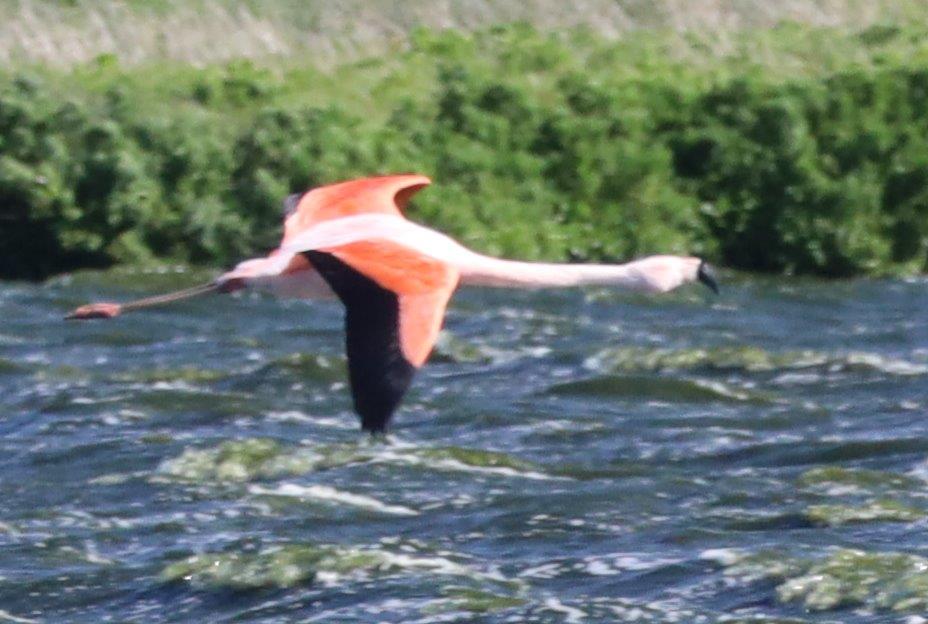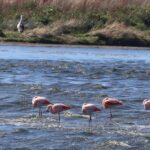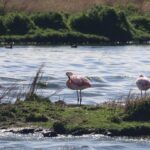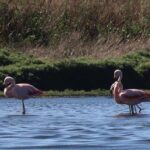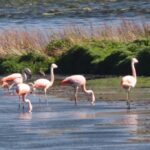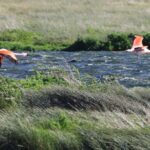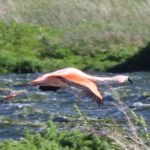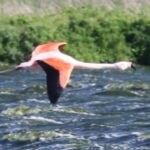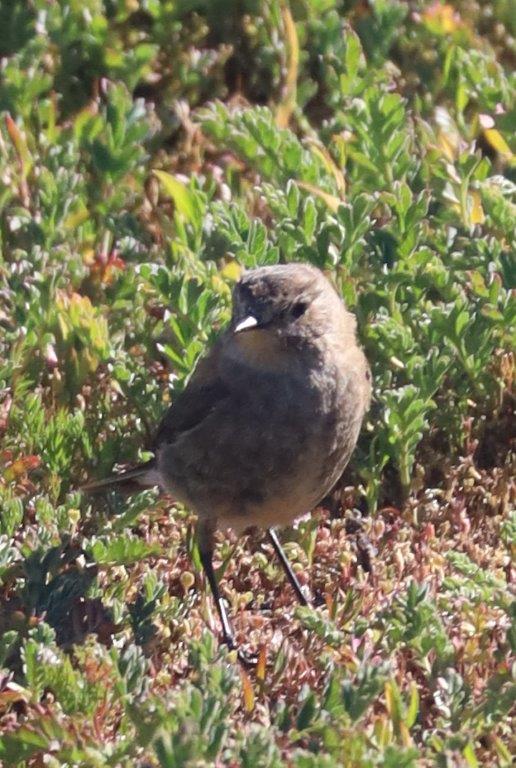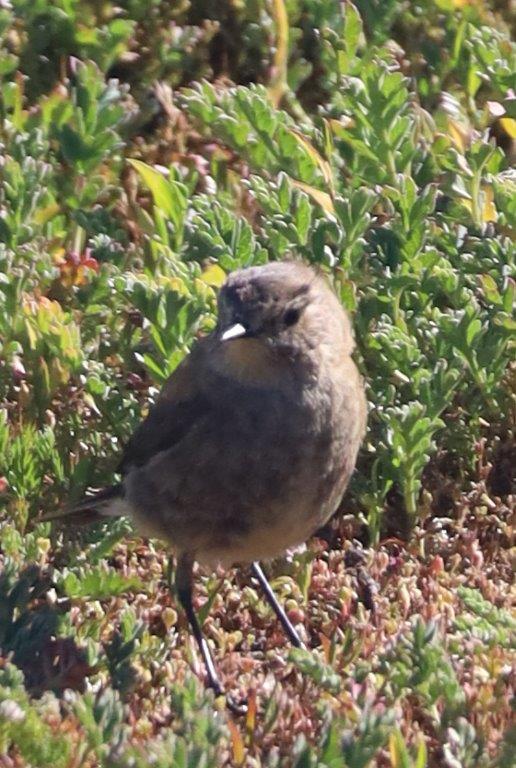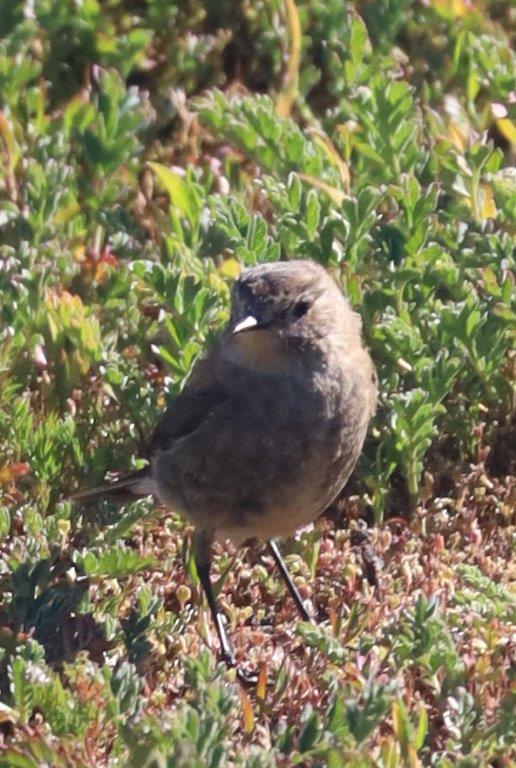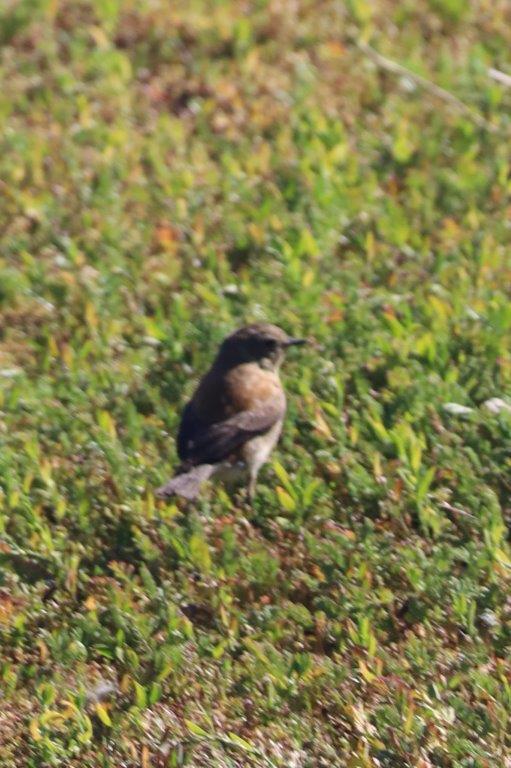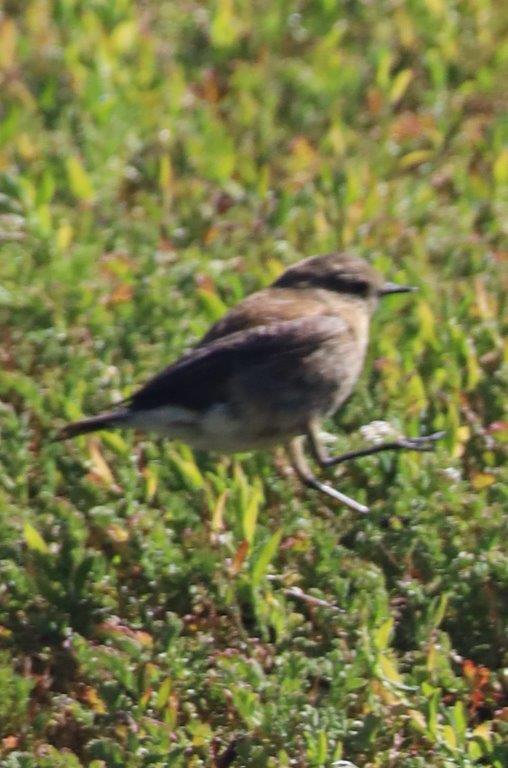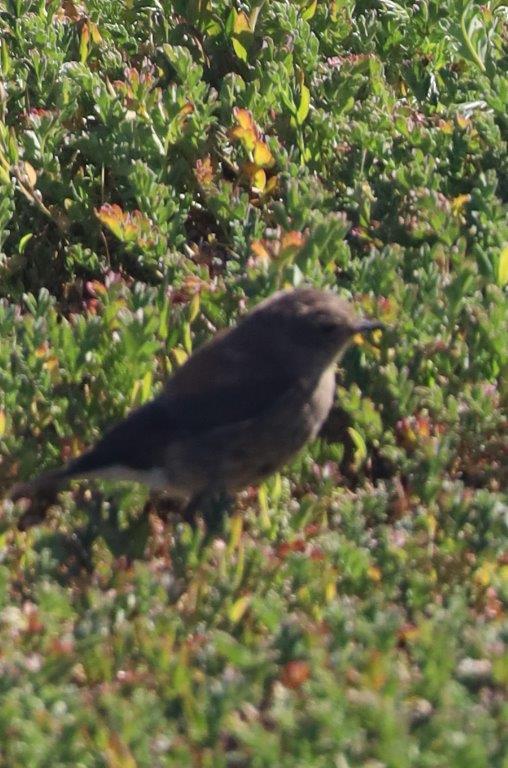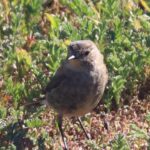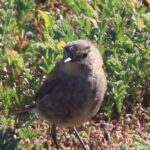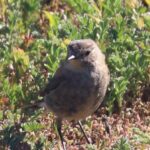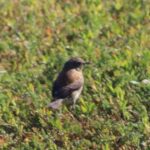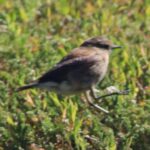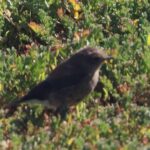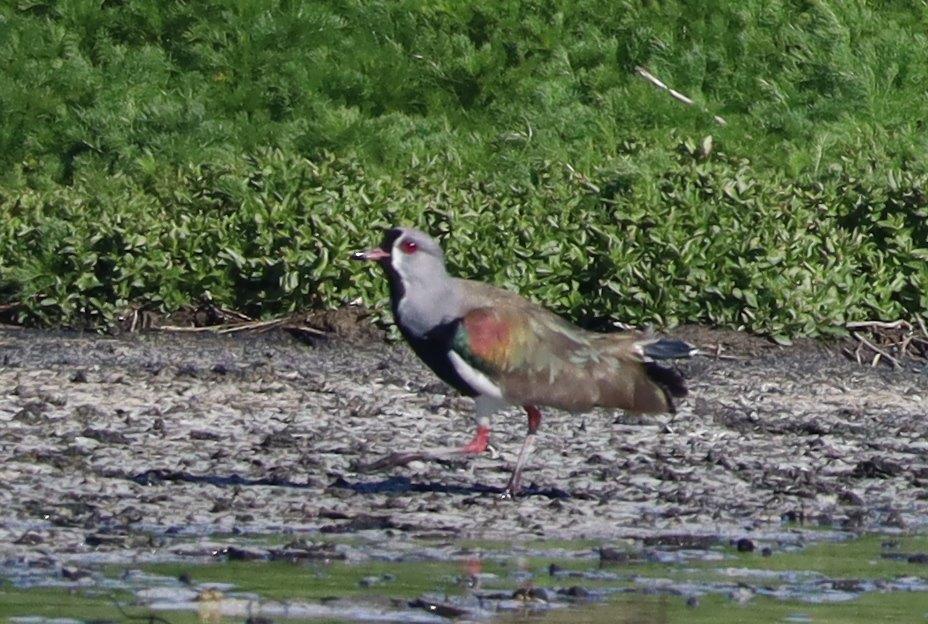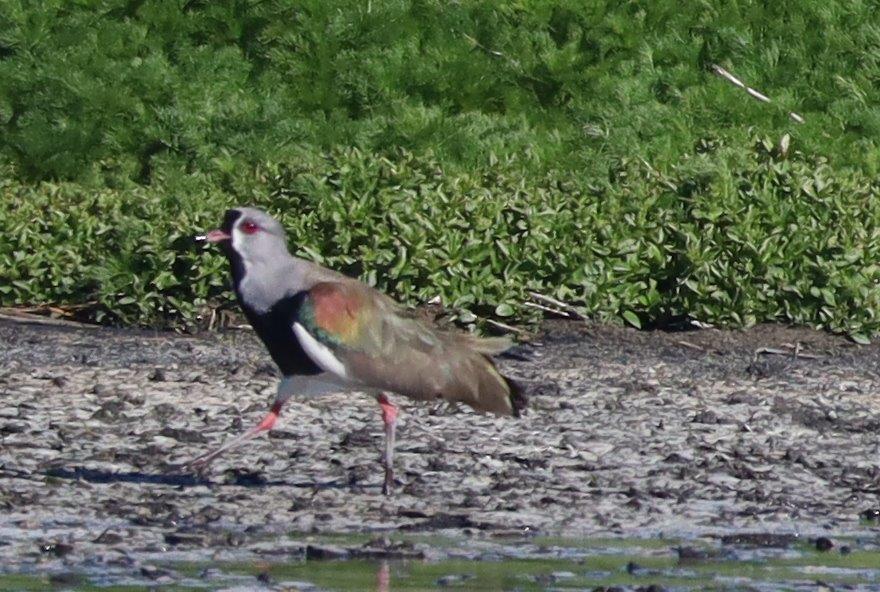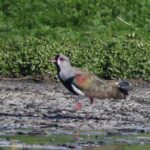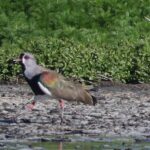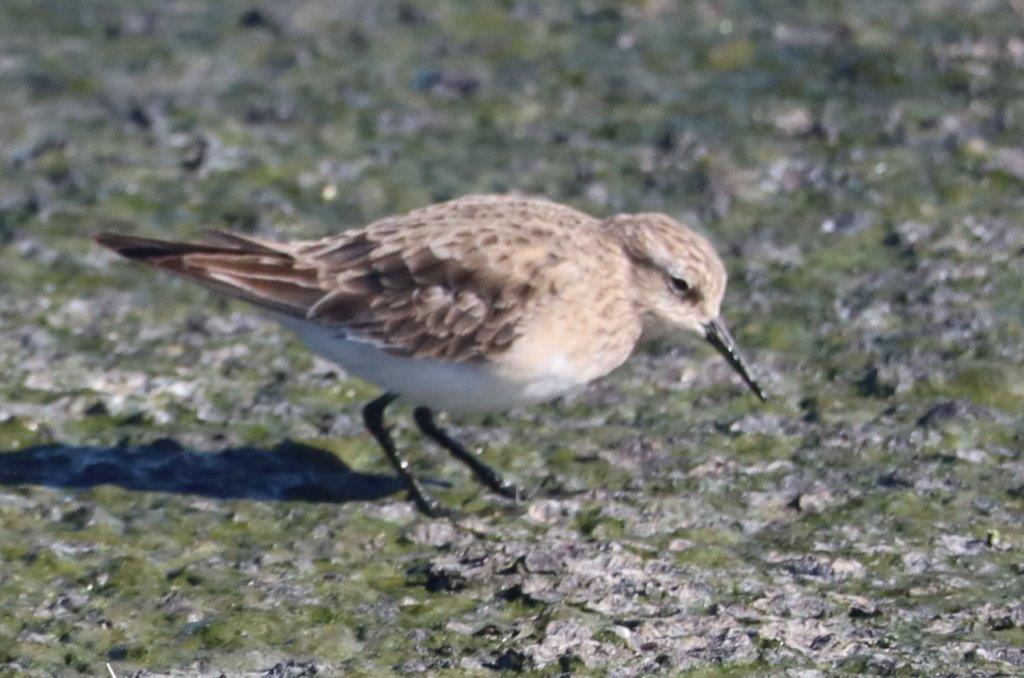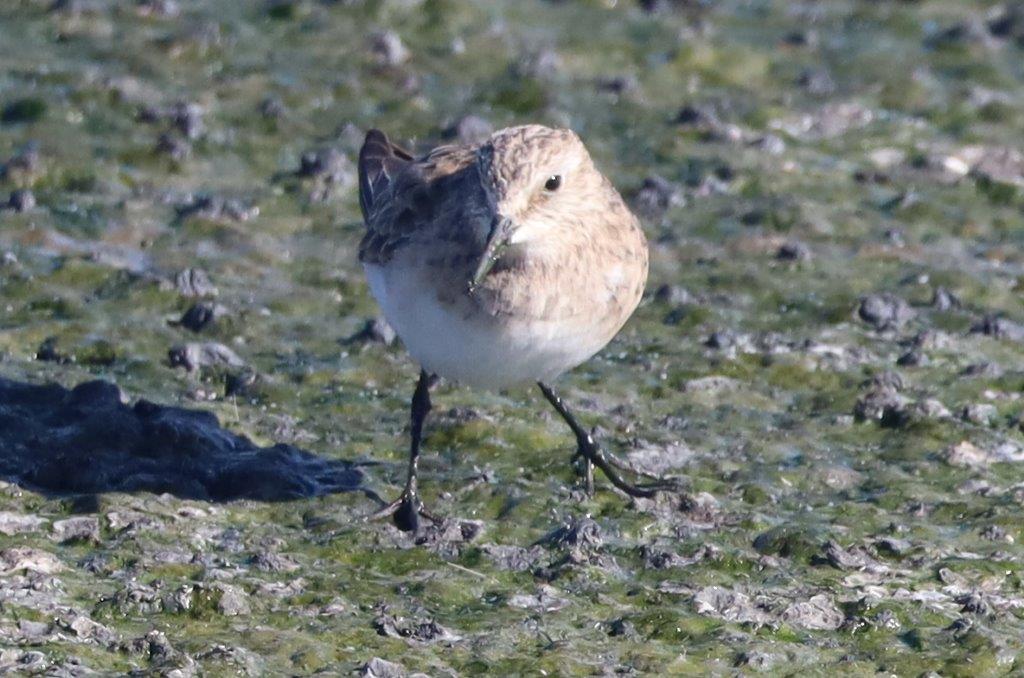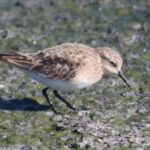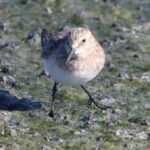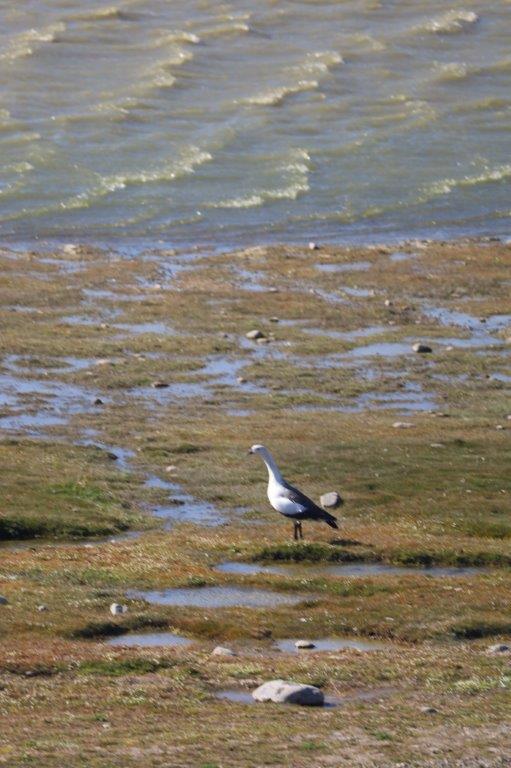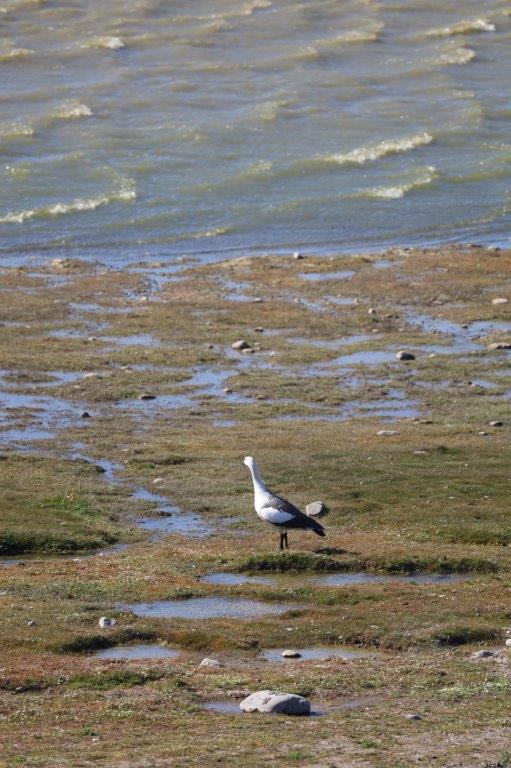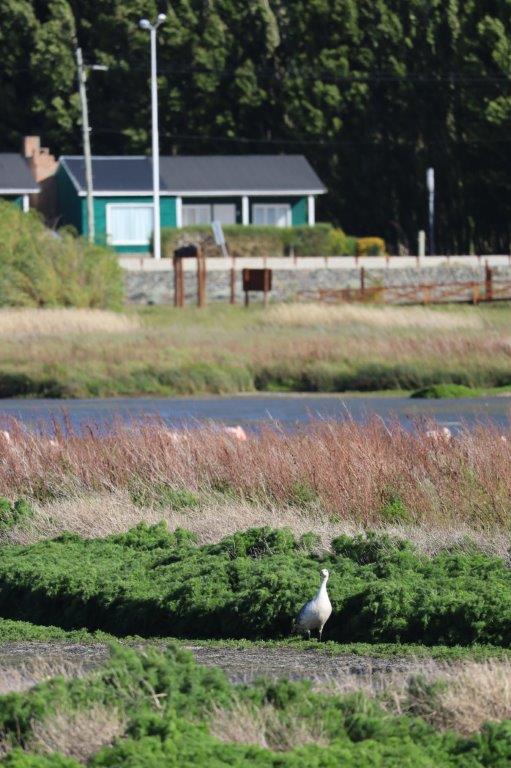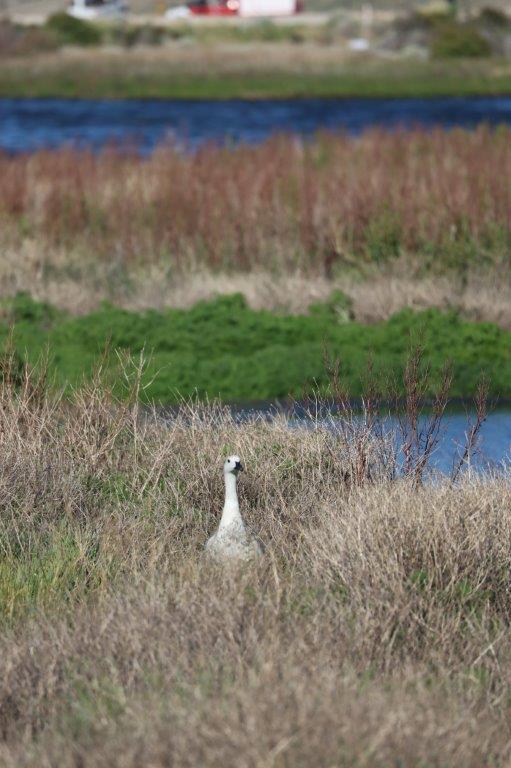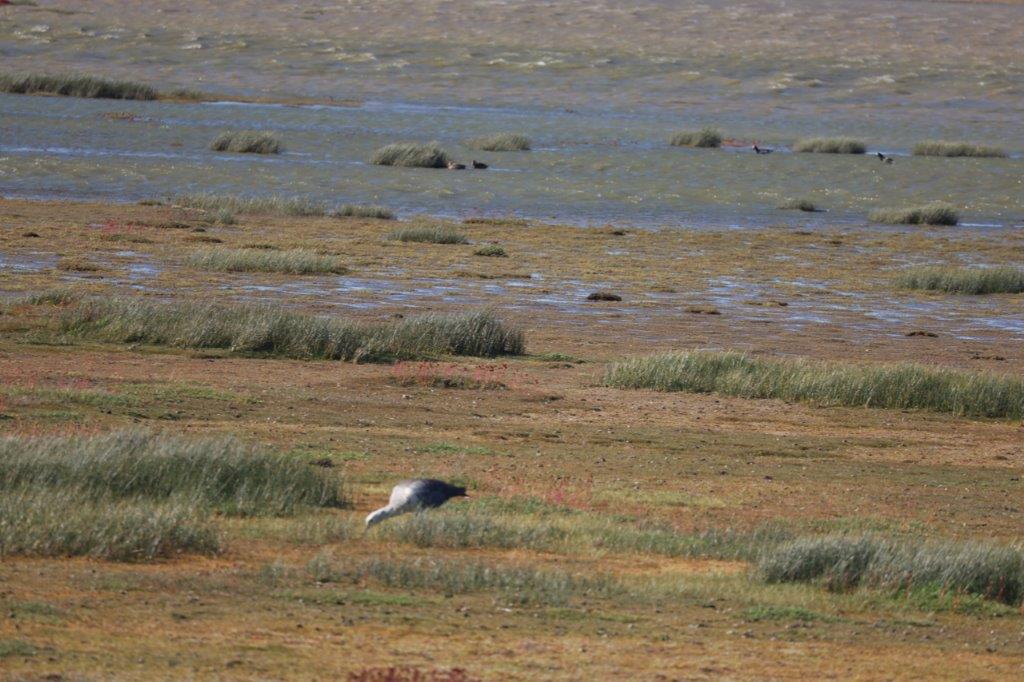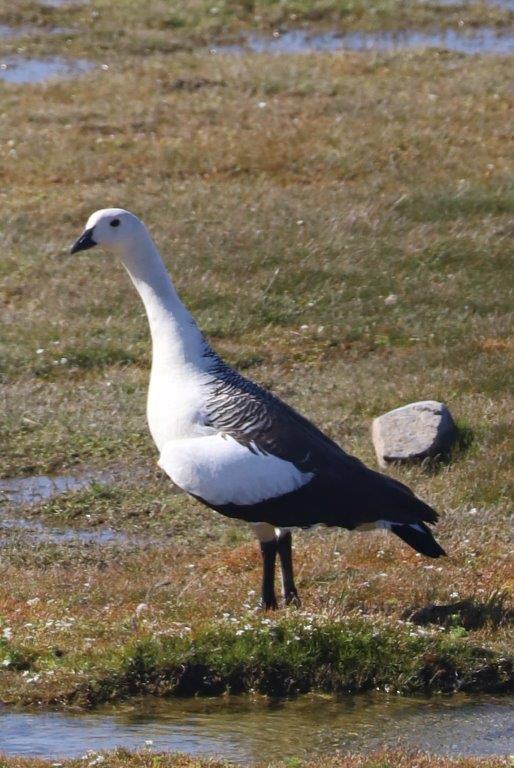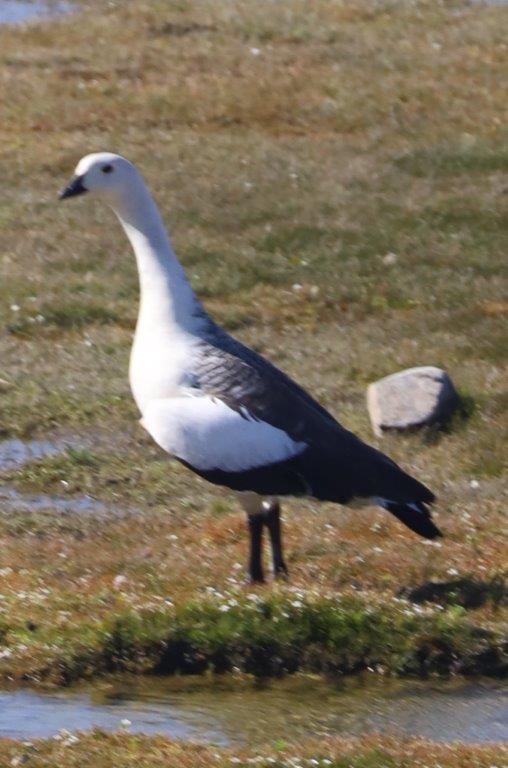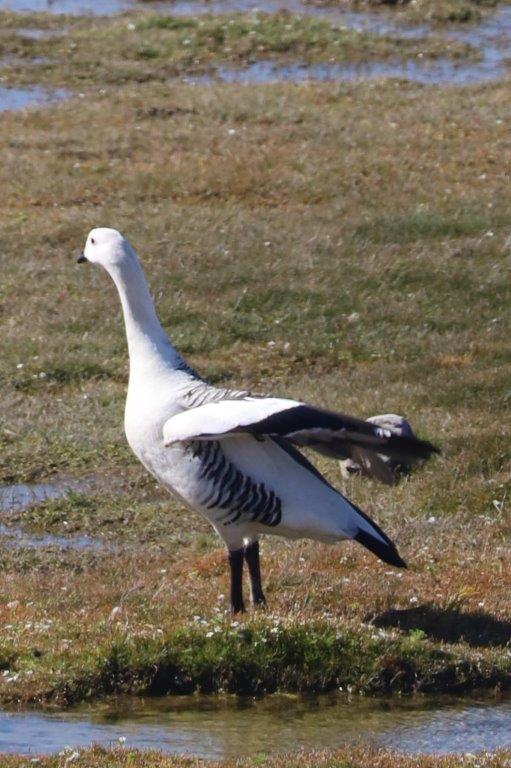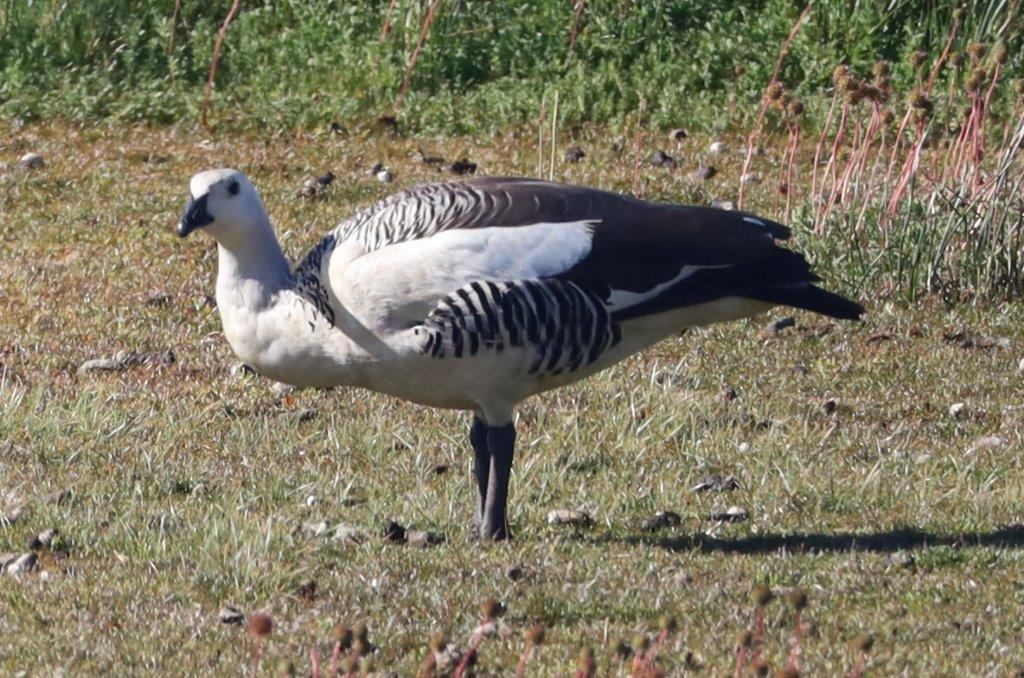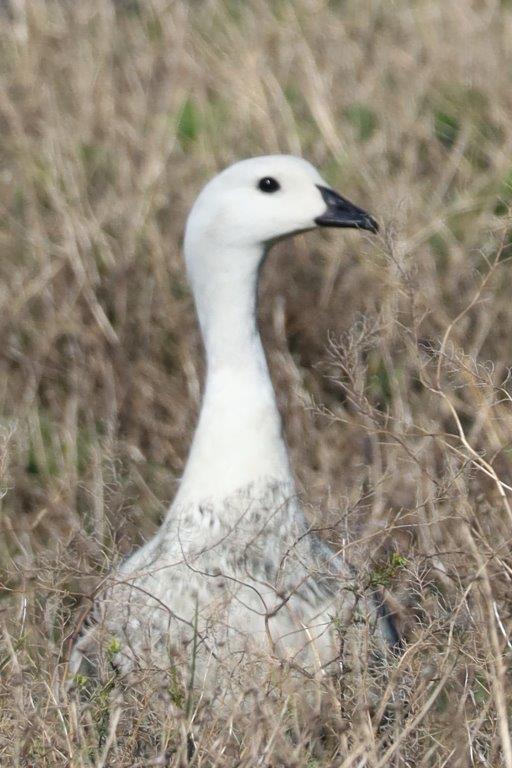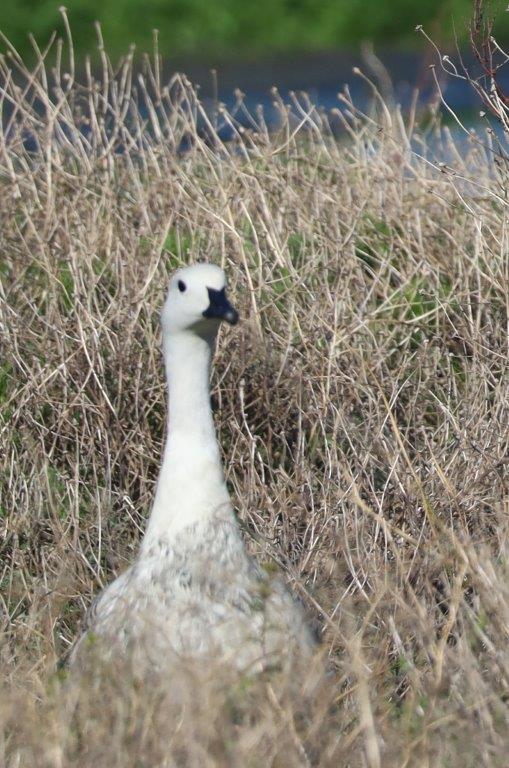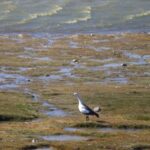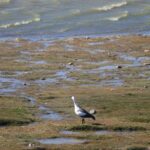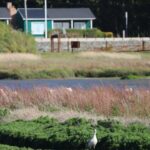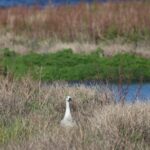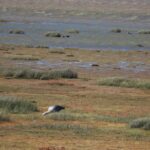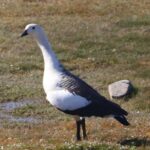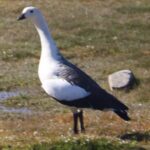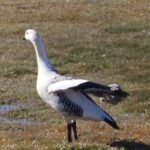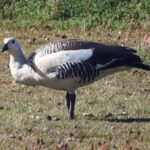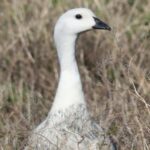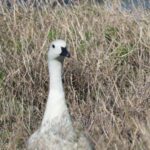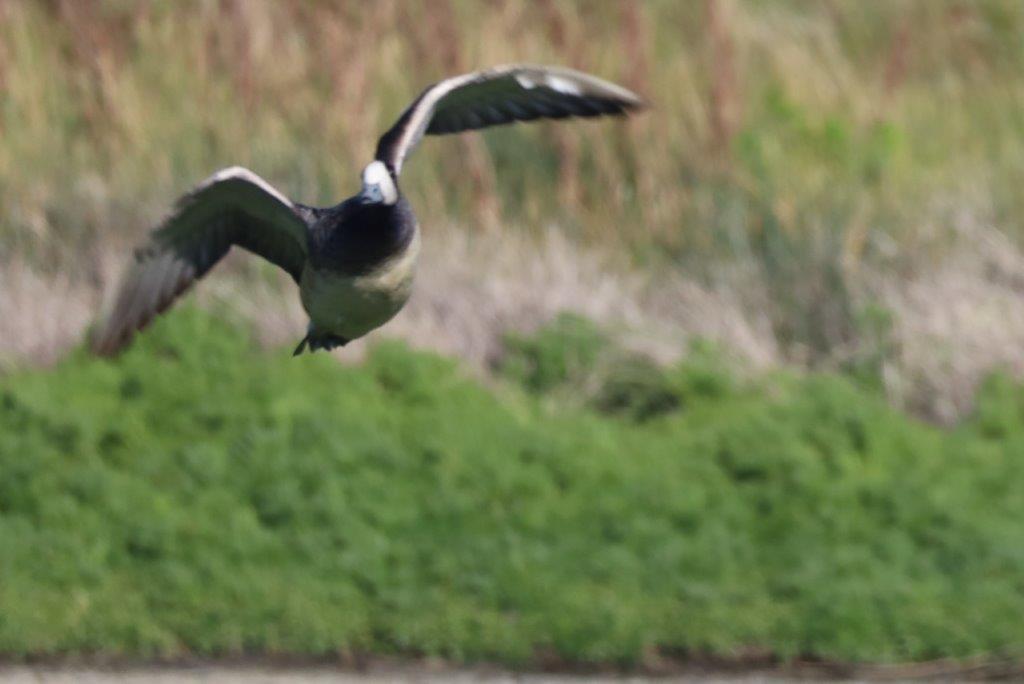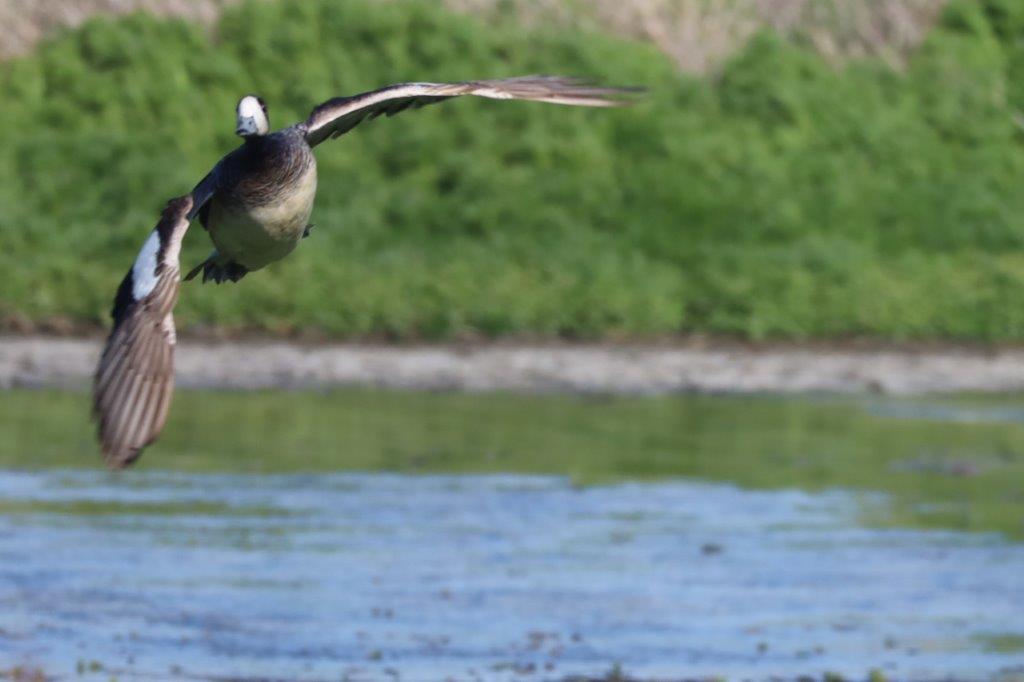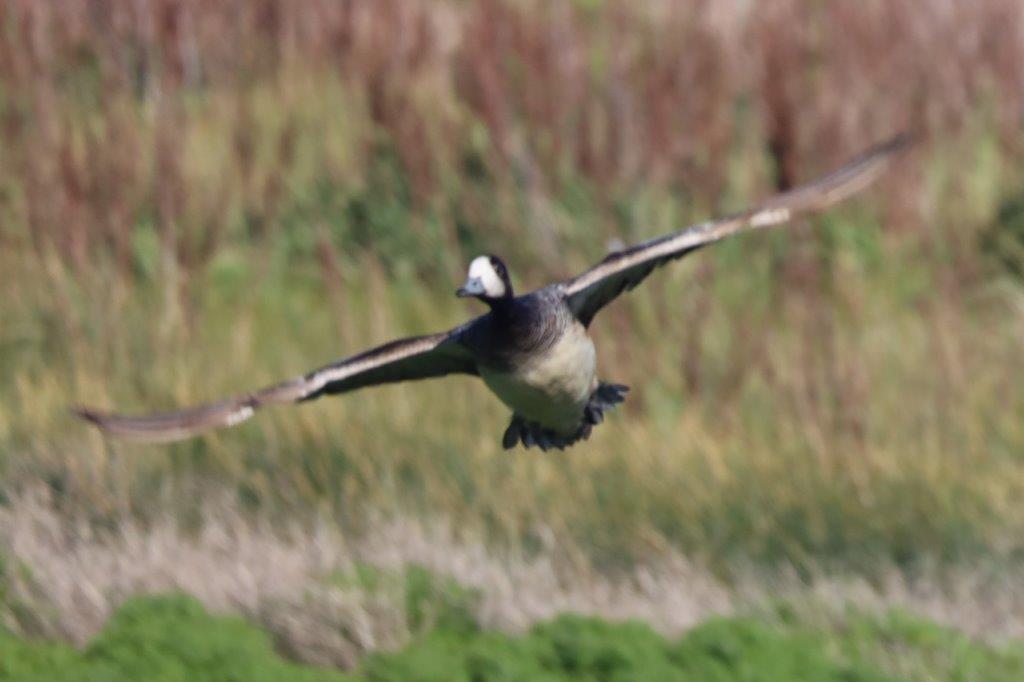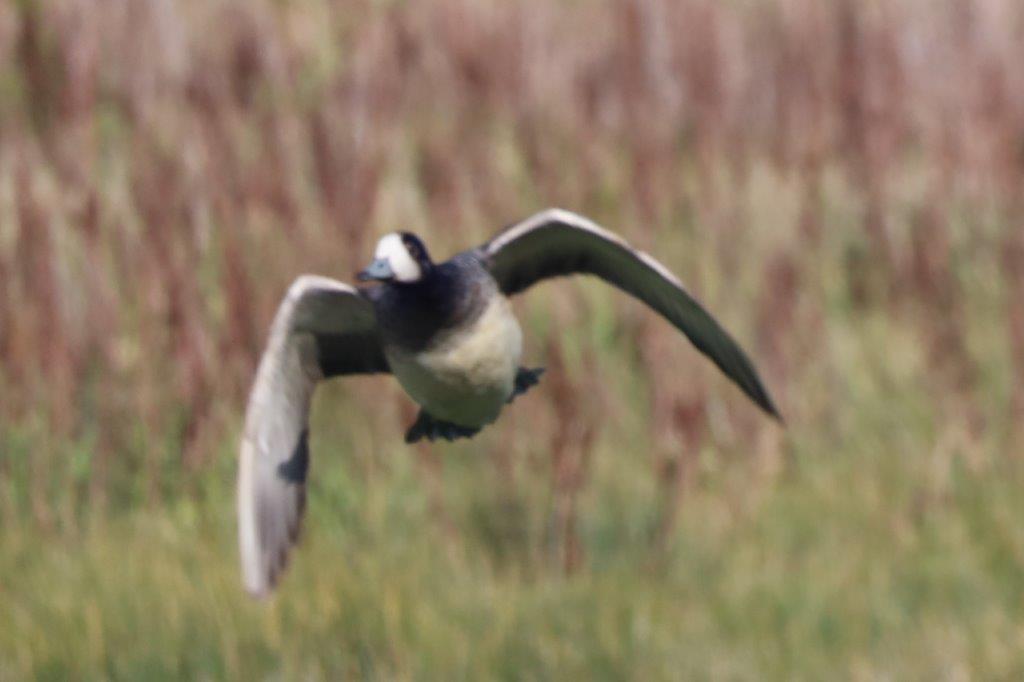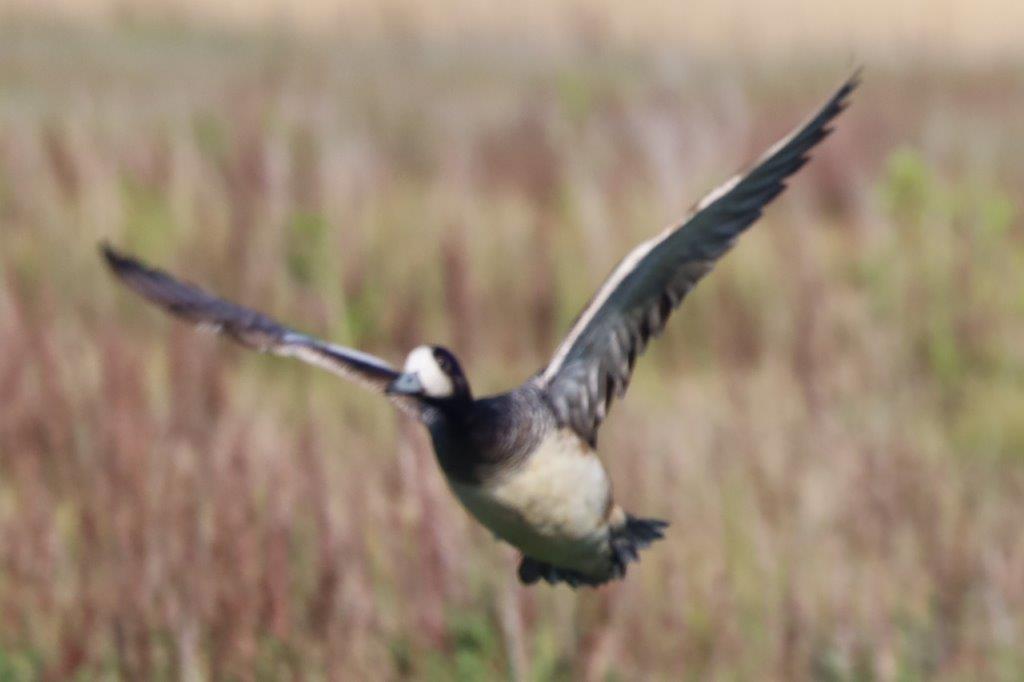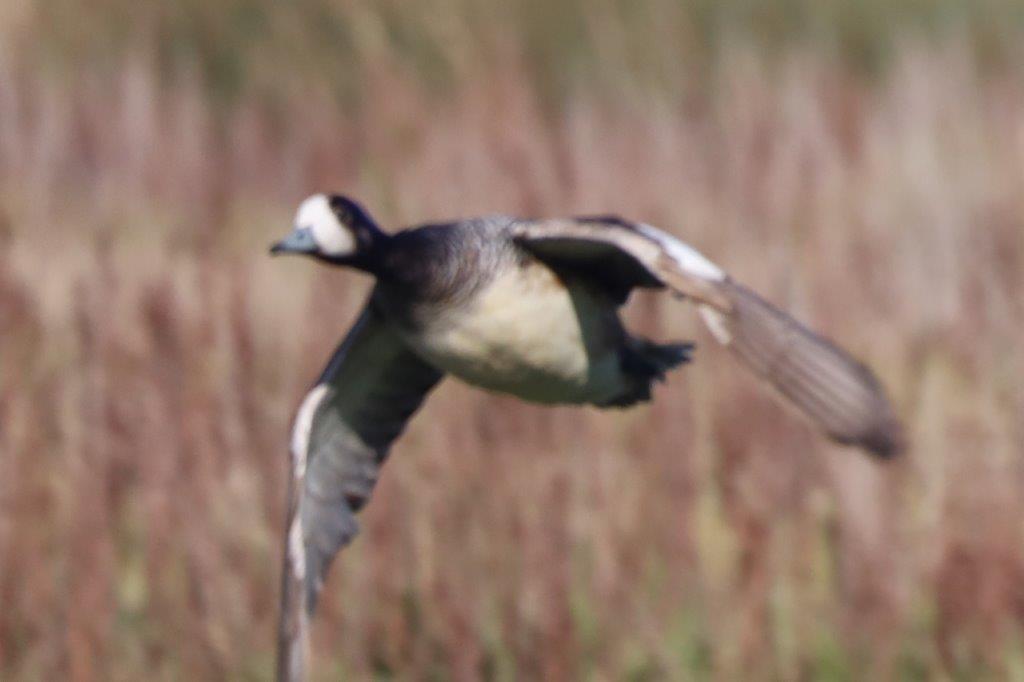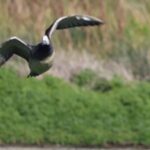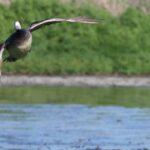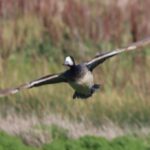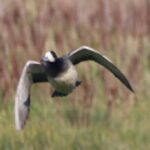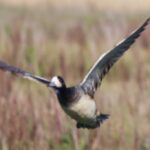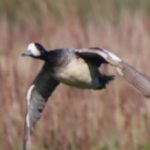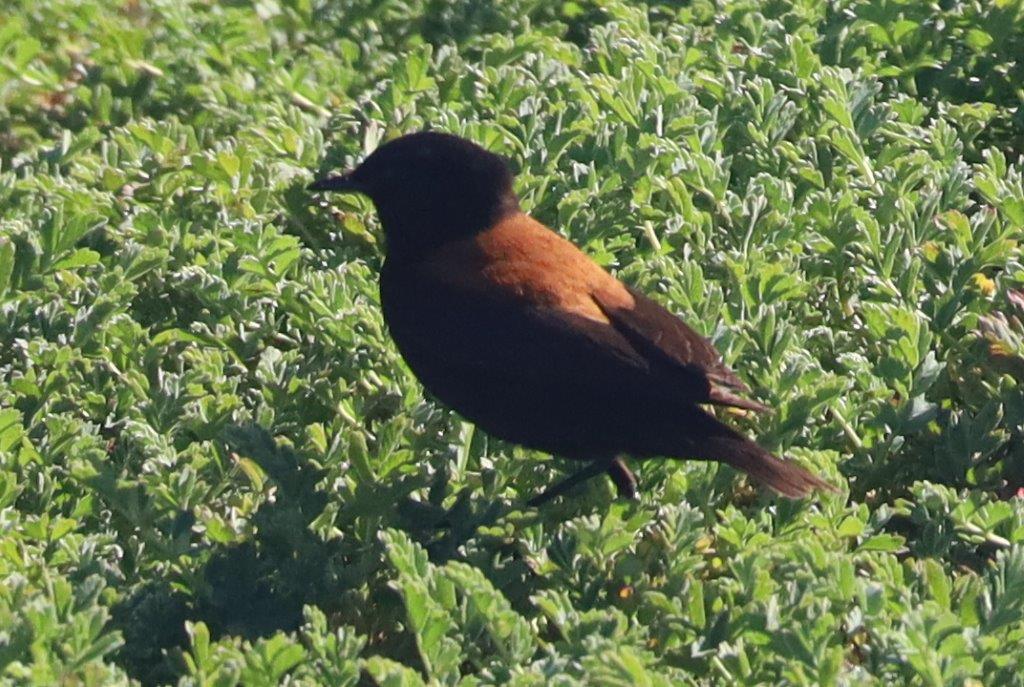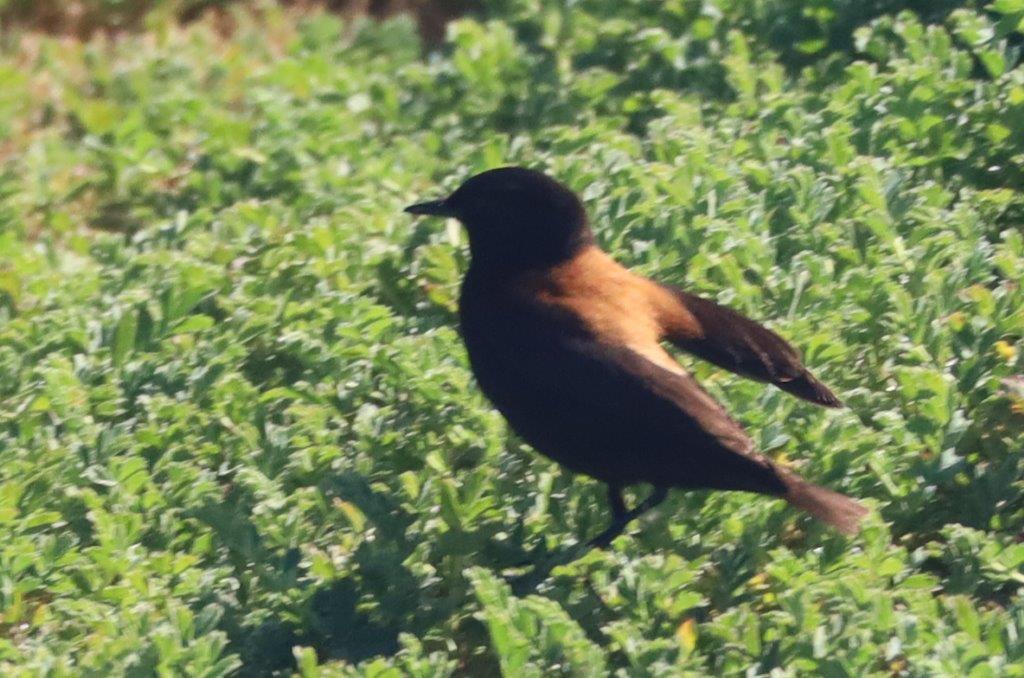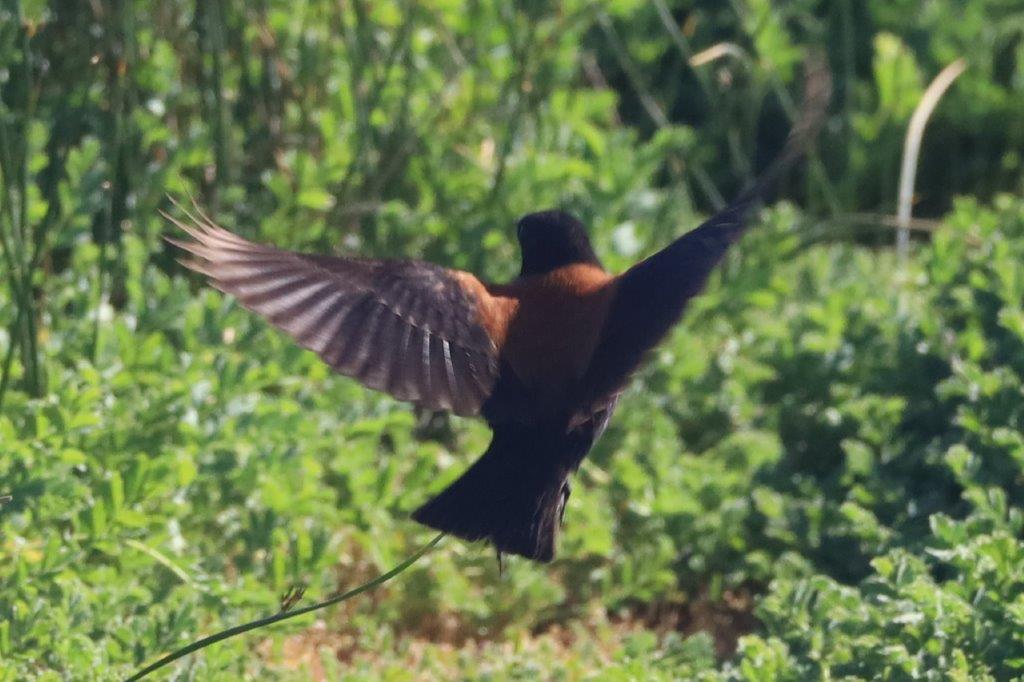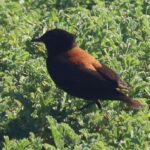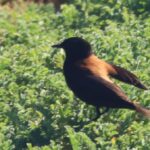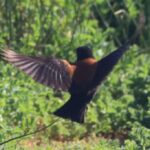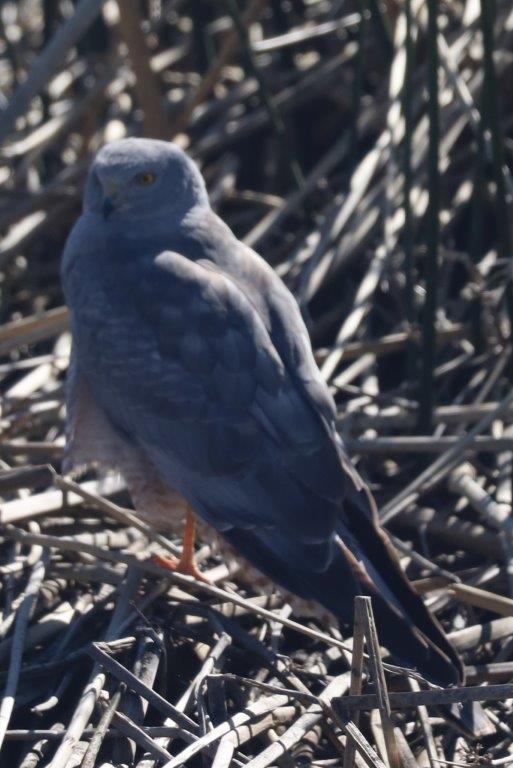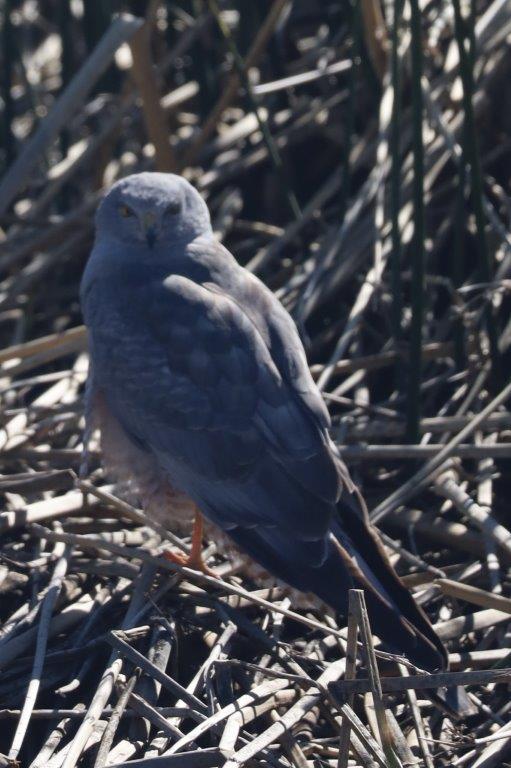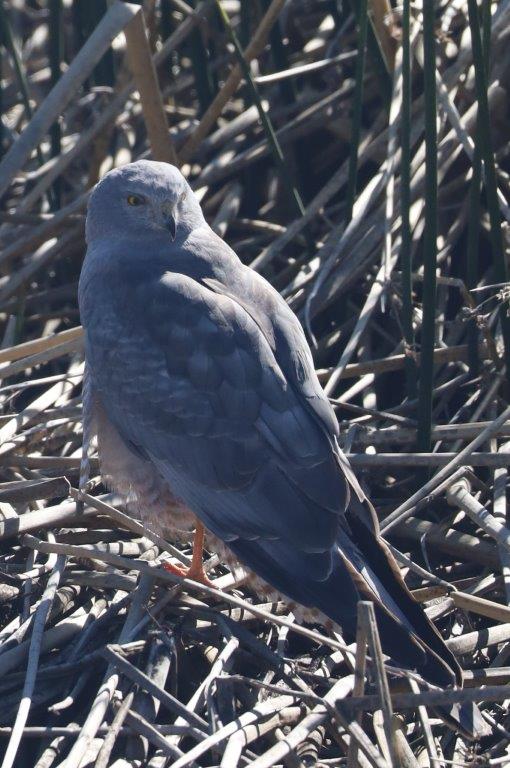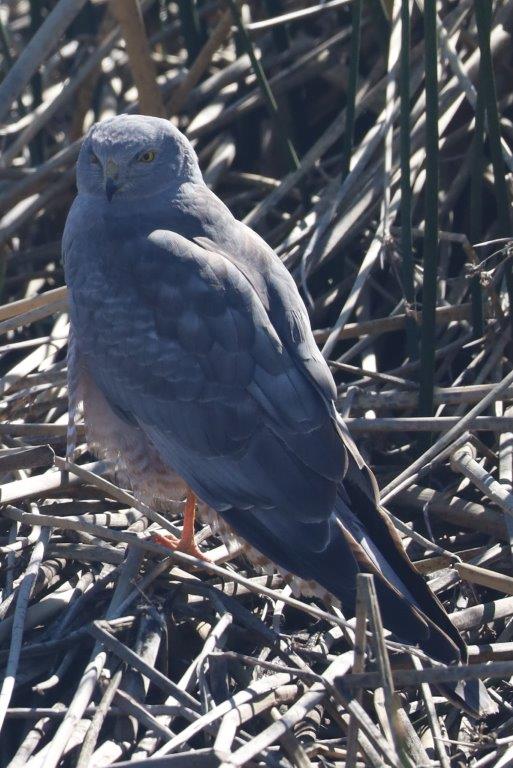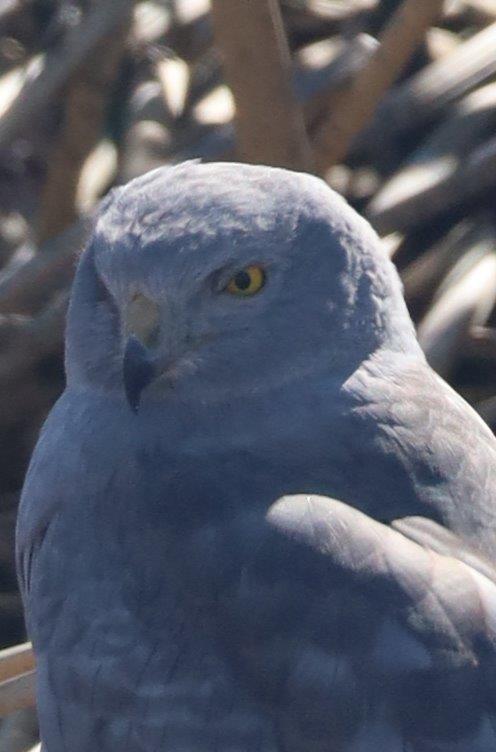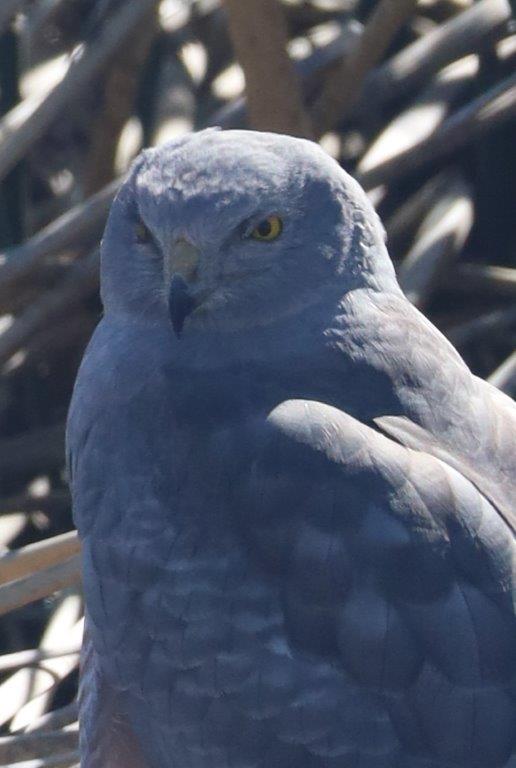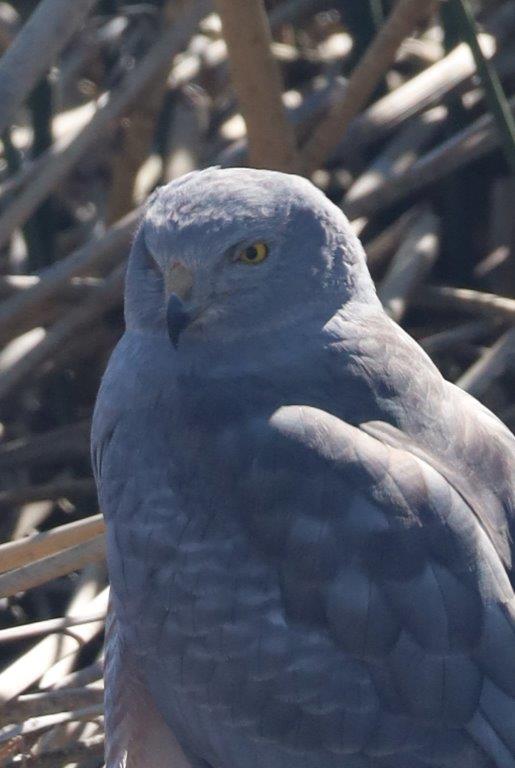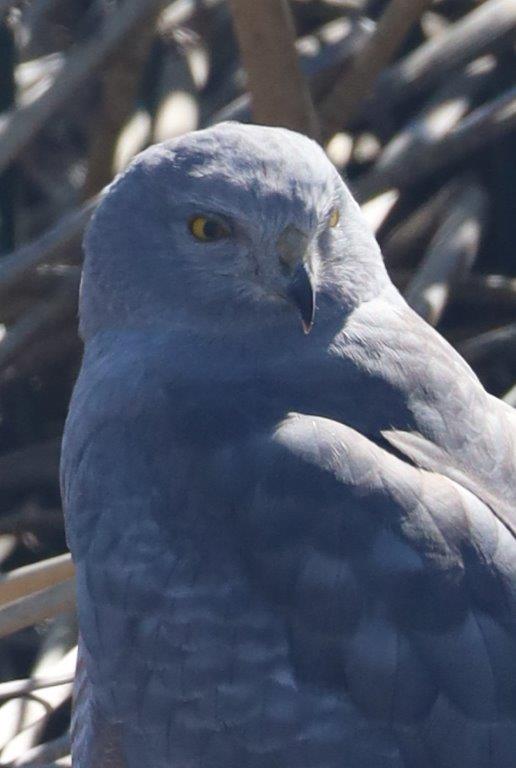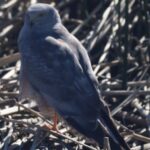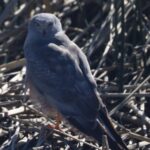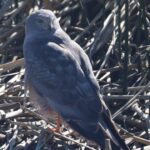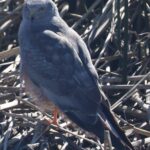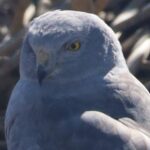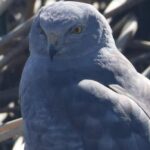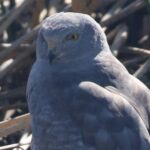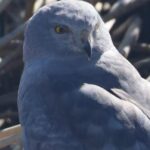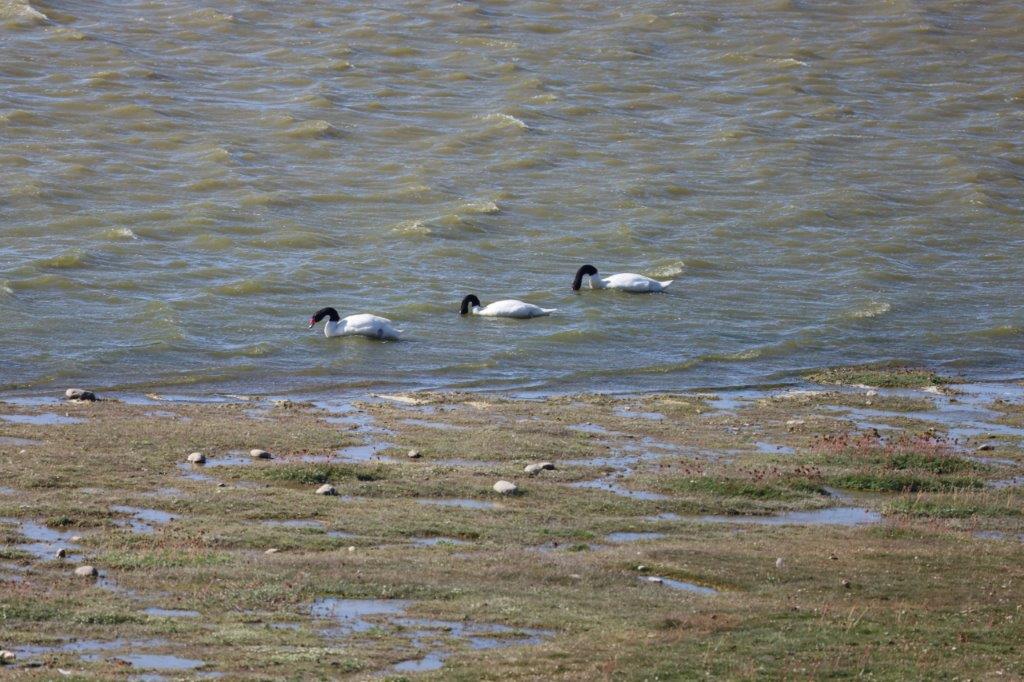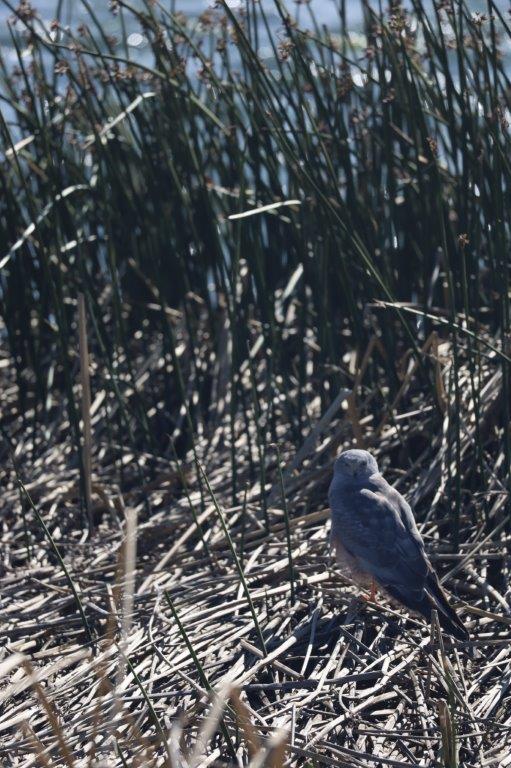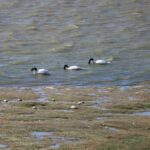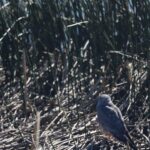36. Argentina: Return to El Calafate and bird watching (Reserva Laguna Nimez)
The day started sunny in Chile and ended sunny in Argentina. At the end of the return journey back into Argentina, via the border post at Cerro Castillo, and the gas station at La Esperanza to El Calafate (where the roadtrip ended), …
The Wandelgek could enjoy some beautiful views over the largest of the Argentine lakes, named Lago Argentino…
 It was afternoon and there were still a couple of hours to spend before it would get dark and dinner time arrived. The Wandelgek had some ideas about how to spend these hours and he grabbed a taxi to the oitskirts of El Calafate and the shore of Lago Argentino. Here was a small but still very interesting wetland that he liked to visit to observe and photograph birds and to breath some fresh air after the earlier roadtrip…
It was afternoon and there were still a couple of hours to spend before it would get dark and dinner time arrived. The Wandelgek had some ideas about how to spend these hours and he grabbed a taxi to the oitskirts of El Calafate and the shore of Lago Argentino. Here was a small but still very interesting wetland that he liked to visit to observe and photograph birds and to breath some fresh air after the earlier roadtrip…
On bird photography
Those of my readers who are bird watchers or bird photographers, unlike me who occasionally goes out to do some bird photography, know how difficult it is to make does bitches… oops… birds, birds, birds, act like super models. It is virtually impossible. It is comparible to making a butterfly spread its wings, or a toddler sit still, or a dog pose gracefully. Impossible. You need to make hundreds or thousands of pictures to be able to select a few acceptable and very rarely a perfect picture. Well I’ve been sweating when I browsed through my overload of unfocussed, blurry set of pictures and next through those of flamencoes and swans with their heads under water, owls turning their head away, sparrows flying away, only showing their tails on the picture and geese hiding in the thickets of the reeds. But after a lot of AAAARGHS, I succeeded in selecting some acceptable stuff to show you.
Reserva Laguna Nimez
Laguna Nimez is a municipal nature reserve located in the urban ejido of the town of El Calafate, in the Lago Argentino department, southwest of the province of Santa Cruz, Argentina.
 The Laguna Nimez reserve was created by municipal decree No. 247 of 1986 on an area of around 35 hectares of public lands corresponding to the Patagonian steppe ecoregion, approximately in the position. Its location is immediately on the shores of Lake Argentino and is less than 1000 m from the center of the town of El Calafate. This relatively small reserve was created with the objective of conserving the natural wealth of the area, for the purposes of study and research, at the same time as enabling a recreational space and observation of flora and fauna.
The Laguna Nimez reserve was created by municipal decree No. 247 of 1986 on an area of around 35 hectares of public lands corresponding to the Patagonian steppe ecoregion, approximately in the position. Its location is immediately on the shores of Lake Argentino and is less than 1000 m from the center of the town of El Calafate. This relatively small reserve was created with the objective of conserving the natural wealth of the area, for the purposes of study and research, at the same time as enabling a recreational space and observation of flora and fauna.
 In 2001, the municipal authorities reached an agreement with the National University of Southern Patagonia so that this house of higher studies would take charge of the administration of the reserve, which allowed the supervised development of some activities and the installation of basic infrastructure, among other actions.
In 2001, the municipal authorities reached an agreement with the National University of Southern Patagonia so that this house of higher studies would take charge of the administration of the reserve, which allowed the supervised development of some activities and the installation of basic infrastructure, among other actions.
Laguna Nimez Trail
The reserve has a beautiful walking trail (sendero laguna nimez) starting at the visitor center.
 It is a 2.7-km loop trail near which is generally considered as an easy route, which takes about 37 min to complete if you do not go birdwatching. This is a popular trail for birding, hiking, and walking, but you can still enjoy some solitude during quieter times of day. The trail is open year-round and is beautiful to visit anytime.
It is a 2.7-km loop trail near which is generally considered as an easy route, which takes about 37 min to complete if you do not go birdwatching. This is a popular trail for birding, hiking, and walking, but you can still enjoy some solitude during quieter times of day. The trail is open year-round and is beautiful to visit anytime.
 The reserve is included among the important areas for the conservation of birds in the province of Santa Cruz.
The reserve is included among the important areas for the conservation of birds in the province of Santa Cruz.
 The vegetation cover of the reserve is typical of the Patagonian steppe, composed of fescue grasslands in which some varieties of berberis and senecio alternate. In the areas that are often covered by the rising water of Lake Argentino, there are sectors of reeds (Schoenoplectus californicus).
The vegetation cover of the reserve is typical of the Patagonian steppe, composed of fescue grasslands in which some varieties of berberis and senecio alternate. In the areas that are often covered by the rising water of Lake Argentino, there are sectors of reeds (Schoenoplectus californicus).
 The ornithological richness is the most interesting aspect of the reserve. Around 80 species have been detected, including some that only use the place temporarily during their migration.
The ornithological richness is the most interesting aspect of the reserve. Around 80 species have been detected, including some that only use the place temporarily during their migration.
 There are records of sightings of common (Rolandia rolland) and great maca (Podiceps major). The Anseriformes are significantly represented by a variety of ducks, including the blackhead (Heteronetta atricapilla), the great grebe (Oxyura jamaicensis), the little grebe (Oxyura vittata), the great grebe (Anas sibilatrix), the red grebe (Anas cyanoptera), the spoonbill (Anas platalea), the crestón (Lophonetta specularioides), the cornflower (Anas georgica) and the barcino (Anas flavirostris), as well as coscoroba (Coscoroba coscoroba) and black-necked swans (Cygnus melancoryphus), Patagonian quiulas (Tinamotis ingoufi) and to a lesser extent the sandy plover (Pluvianellus socialis). The presence of many varieties of small songbirds has been verified, among which are the silverbill (Hymenops perspicillatus), the wigeon (Elaenia albiceps), the black-winged lark (Mimus patagonicus), yellow (Agelasticus thilius), the Patagonian grasshopper (Phrygilus patagonicus) and the Andean grasshopper (Phrygilus gayi), among others…
There are records of sightings of common (Rolandia rolland) and great maca (Podiceps major). The Anseriformes are significantly represented by a variety of ducks, including the blackhead (Heteronetta atricapilla), the great grebe (Oxyura jamaicensis), the little grebe (Oxyura vittata), the great grebe (Anas sibilatrix), the red grebe (Anas cyanoptera), the spoonbill (Anas platalea), the crestón (Lophonetta specularioides), the cornflower (Anas georgica) and the barcino (Anas flavirostris), as well as coscoroba (Coscoroba coscoroba) and black-necked swans (Cygnus melancoryphus), Patagonian quiulas (Tinamotis ingoufi) and to a lesser extent the sandy plover (Pluvianellus socialis). The presence of many varieties of small songbirds has been verified, among which are the silverbill (Hymenops perspicillatus), the wigeon (Elaenia albiceps), the black-winged lark (Mimus patagonicus), yellow (Agelasticus thilius), the Patagonian grasshopper (Phrygilus patagonicus) and the Andean grasshopper (Phrygilus gayi), among others…
Black-necked swan (Cygnus melancoryphus)
 The black-necked swan (Cygnus melancoryphus) is a species of waterfowl in the tribe Cygnini of the subfamily Anserinae. It is found in Argentina, Brazil, Chile, Uruguay, and the Falkland Islands.
The black-necked swan (Cygnus melancoryphus) is a species of waterfowl in the tribe Cygnini of the subfamily Anserinae. It is found in Argentina, Brazil, Chile, Uruguay, and the Falkland Islands.
 It is common to observe congregations of specimens of
It is common to observe congregations of specimens of
Southern or Chilean flamingo (Phoenicopterus chilensis)
The Chilean flamingo (Phoenicopterus chilensis) is a species of large flamingo at a height of 110–130 cm (43–51 in) closely related to the American flamingo and the greater flamingo, with which it was sometimes considered conspecific. The species is listed as Near Threatened by the IUCN.
Grass Wren (Cistothorus platensis)
The grass wren (Cistothorus platensis) is a species of passerine bird in the family Troglodytidae. It is widely distributed in central and southern America.
Southern Lapwing (Vanellus chilensis)
The southern lapwing (Vanellus chilensis), commonly called quero-quero in Brazil, or tero in Argentina and Uruguay, tero-tero in Paraguay, and queltehue in Chile is a wader in the order Charadriiformes. It is a common and widespread resident throughout South America, except in densely forested regions (e.g. most of the Amazon), the higher parts of the Andes, and the arid coast of a large part of western South America. This bird is particularly common in the basin of the Río de la Plata. It has also been spreading through Central America in recent years. It reached Trinidad in 1961, Tobago in 1974, and has rapidly increased on both islands, sporadically making its way North to Barbados where one pair mated, nested, and produced chicks in 2007.
White-rumped sandpiper (Calidris fuscicollis)
The white-rumped sandpiper (Calidris fuscicollis) is a small shorebird that breeds in the northern tundra of Canada and Alaska. This bird can be difficult to distinguish from other similar tiny shorebirds; these are known collectively as “peeps” or “stints”. These birds are not often spotted. In the summer, they are rarely seen because they are in such an obscure breeding location. Similarly, in the winter they are rarely seen because they travel too far south for many birdwatchers. Therefore, the majority of sightings occur during the spring or fall in temperate regions and are generally in small numbers around water.
The Upland or Magellan Goose (Chloephaga picta)
The upland goose or Magellan goose (Chloephaga picta) is a sheldgoose of the shelduck-sheldgoose subfamily of the Anatidae, the biological family that includes the ducks and most duck-like waterfowl such as the geese and swans. Sheldgeese resemble true geese and display similar habits, yet they are more closely related to shelducks and ducks. The two recognized subspecies of upland goose are the continental picta subspecies and the insular (island) leucoptera subspecies.
Marbled Duck (Marmaronetta angustirostris)
 The marbled duck or marbled teal (Marmaronetta angustirostris) is a medium-sized species of duck from southern Europe, northern Africa, and western and central Asia. The scientific name, Marmaronetta angustirostris, comes from the Greek marmaros, marbled and netta, a duck, and Latin angustus, narrow or small and -rostris billed.
The marbled duck or marbled teal (Marmaronetta angustirostris) is a medium-sized species of duck from southern Europe, northern Africa, and western and central Asia. The scientific name, Marmaronetta angustirostris, comes from the Greek marmaros, marbled and netta, a duck, and Latin angustus, narrow or small and -rostris billed.
The barnacle goose (Branta leucopsis)
The barnacle goose (Branta leucopsis) is a species of goose that belongs to the genus Branta of black geese, which contains species with largely black plumage, distinguishing them from the grey Anser species. Despite its superficial similarity to the brant goose, genetic analysis has shown it is an eastern derivative of the cackling goose lineage.
Austral Negrito or Patagonia Negrito (Lessonia rufa)
The austral negrito or Patagonian negrito (Lessonia rufa) is a species of bird in the family Tyrannidae. It breeds in Argentina and Chile, migrating north as far as Bolivia, southern Brazil, Paraguay and Uruguay. It is a vagrant to the Falkland Islands and the South Georgia and the South Sandwich Islands territory. It has also been seen in the South Shetland Islands. Its natural habitats are freshwater lakes and saline marshes. It is primarily insectivorous but can eat algae. It hunts in grassland environments with short grass. It perches and moves throughout foliage such as shrubs in order to find prey.
Andean Duck (Oxyura ferruginea)
The Andean duck (Oxyura ferruginea) is a bird species native to the Andean Mountains of South America, one of the stiff-tailed ducks. It was considered a subspecies of the ruddy duck. In fact, some taxonomic authorities still consider it conspecific, including the American Ornithological Society.
Red shoveler (Spatula platalea)
 The red shoveler (Spatula platalea) is a species of dabbling duck native to southern South America. The red shoveler breeds in the southern half of South America. It ranges from Tierra del Fuego northwards to Chile and most parts of Argentina, as well as to the Falkland Islands; there are small, isolated breeding populations in the southern regions of Peru, Bolivia, and Paraguay. They can also be found in the extreme southern regions of Brazil and Uruguay, in isolated coastal populations and also further inland. It inhabits shallow lakes and pools with dense reed beds, intertidal mangrove swamps and marshes. They can also be found in brackish waters, such as coastal lagoons, deltas and estuaries.
The red shoveler (Spatula platalea) is a species of dabbling duck native to southern South America. The red shoveler breeds in the southern half of South America. It ranges from Tierra del Fuego northwards to Chile and most parts of Argentina, as well as to the Falkland Islands; there are small, isolated breeding populations in the southern regions of Peru, Bolivia, and Paraguay. They can also be found in the extreme southern regions of Brazil and Uruguay, in isolated coastal populations and also further inland. It inhabits shallow lakes and pools with dense reed beds, intertidal mangrove swamps and marshes. They can also be found in brackish waters, such as coastal lagoons, deltas and estuaries.
Cinereous Harrier (Circus cinereus)
The cinereous harrier (Circus cinereus) is a South American bird of prey of the harrier family. Its breeding range extends from the Tierra del Fuego through Argentina and Chile to Bolivia, Paraguay, Peru and southern Brazil; and across the Andes north to Colombia. The bird’s population is declining but due to its large range is not considered vulnerable. The term cinereous, deriving from the Latin word for ashy, describes its colouration.
Black-faced Ibis (Theristicus melanopis)
 The black-faced ibis (Theristicus melanopis) is a species of bird in the family Threskiornithidae. It is found in grassland and fields in southern and western South America. It has been included as a subspecies of the similar buff-necked ibis, but today all major authorities accept the split. The black-faced ibis also includes the Andean ibis (T. branickii) as a subspecies. Some taxonomic authorities (including the American Ornithological Society) still do so.
The black-faced ibis (Theristicus melanopis) is a species of bird in the family Threskiornithidae. It is found in grassland and fields in southern and western South America. It has been included as a subspecies of the similar buff-necked ibis, but today all major authorities accept the split. The black-faced ibis also includes the Andean ibis (T. branickii) as a subspecies. Some taxonomic authorities (including the American Ornithological Society) still do so.
Black-headed Gull (Chroicocephalus ridibundus)
The black-headed gull (Chroicocephalus ridibundus) is a small gull that breeds in much of the Palearctic including Europe and also in coastal eastern Canada. Most of the population is migratory and winters further south, but some birds reside in the milder westernmost areas of Europe. The species also occurs in smaller numbers in northeastern North America, where it was formerly known as the common black-headed gull. As is the case with many gulls, it was previously placed in the genus Larus.
End of the Laguna Nimez Trail
The Wandelgek enjoyed the sun, although he was battered by the relentless Patagonian winds and reminded of the fact that he had lost his cap to that wind in Chile. He was in a town now that harboured a lot of hikers and backpackers, so it was obvious to assume that there would have to be some outdoor stores too. The Wandelgek slowly walked to the end of the trail…

